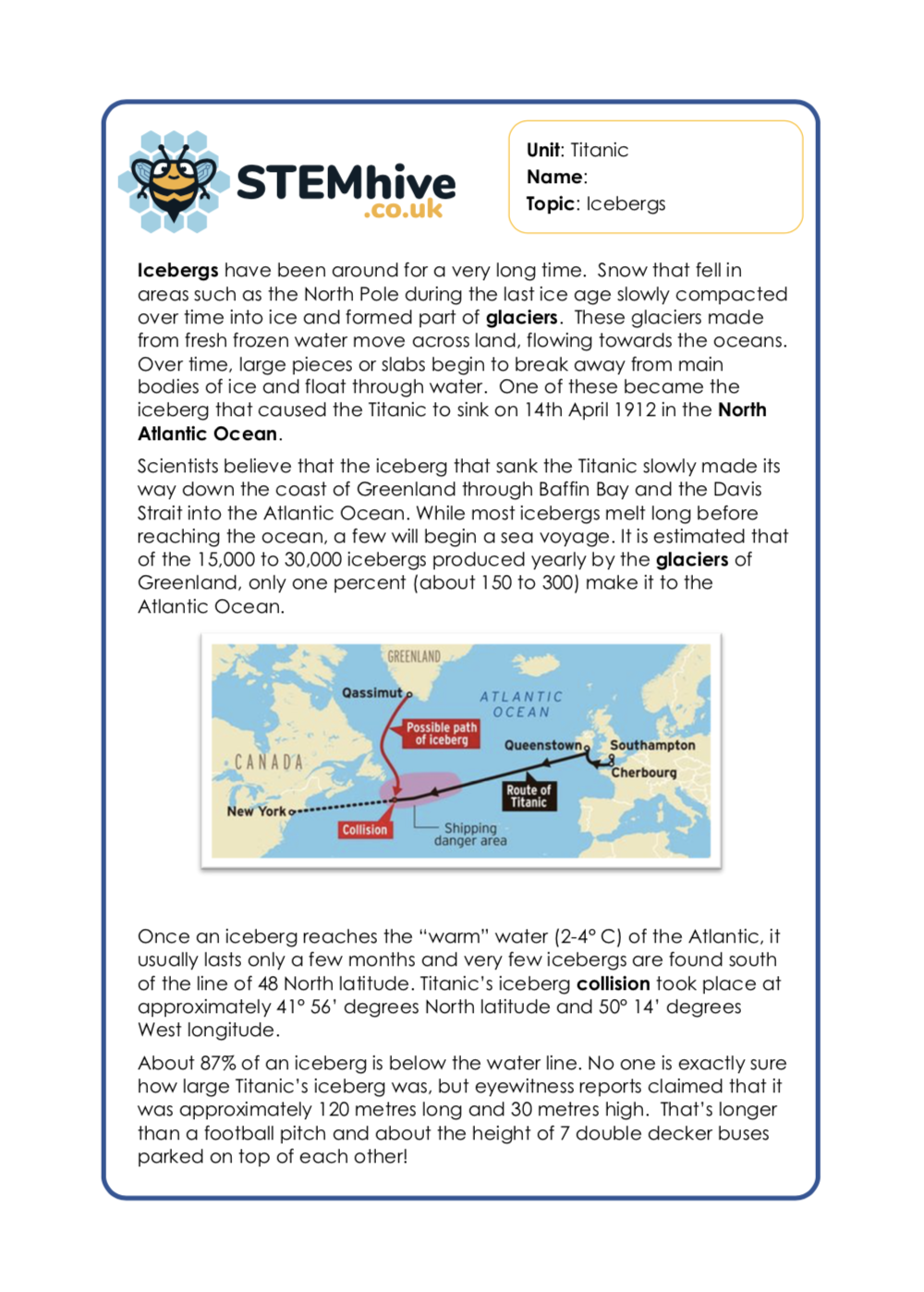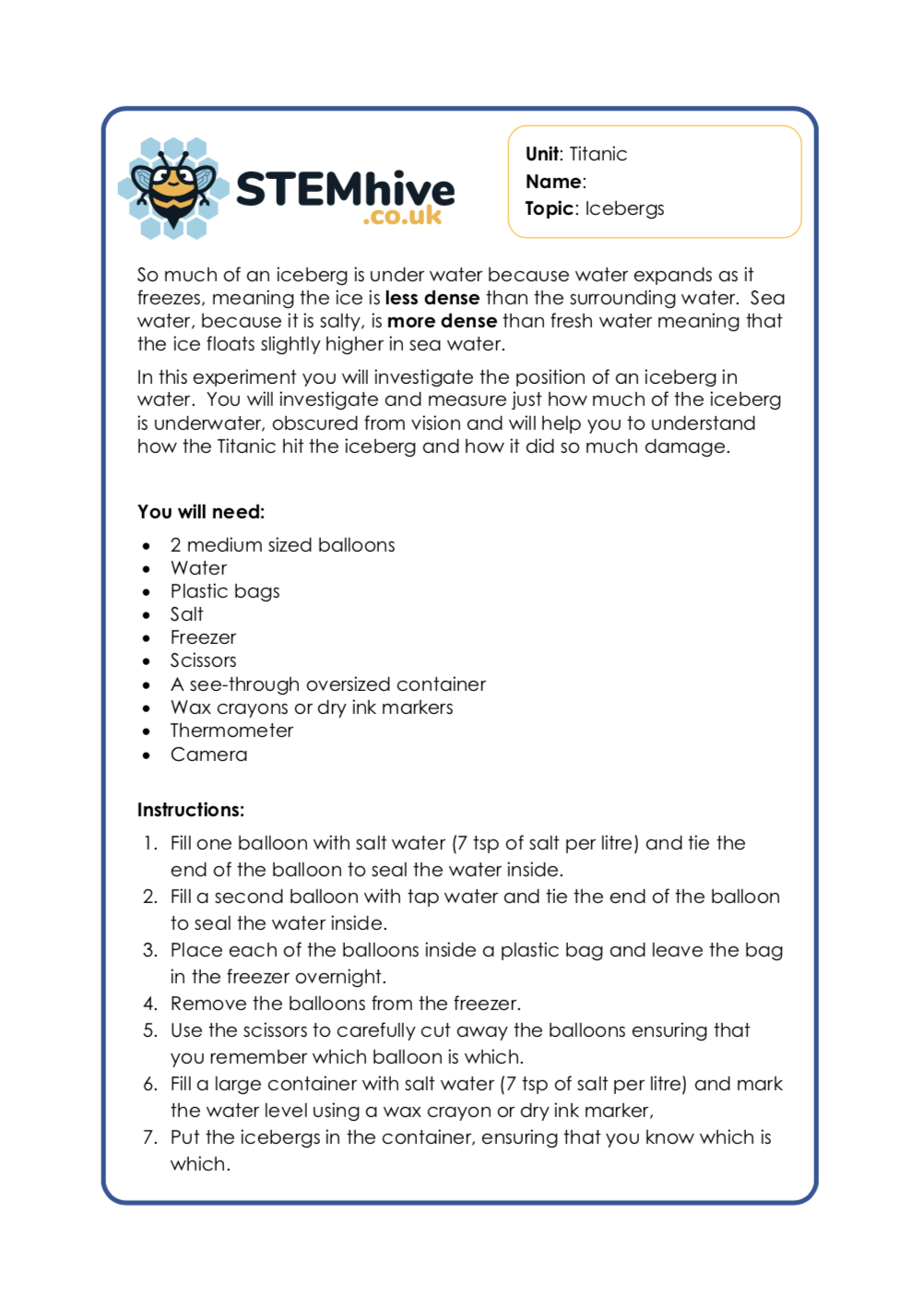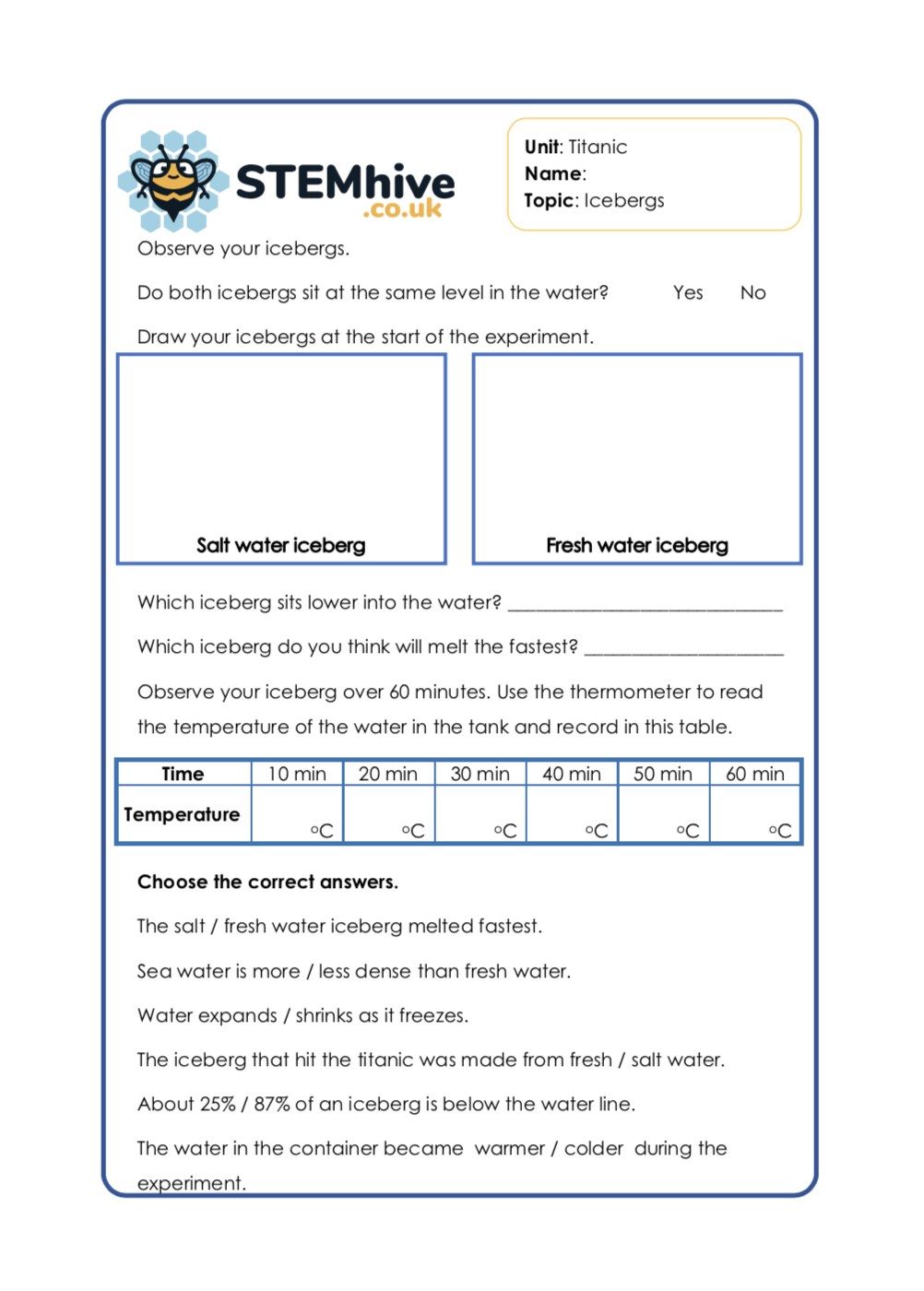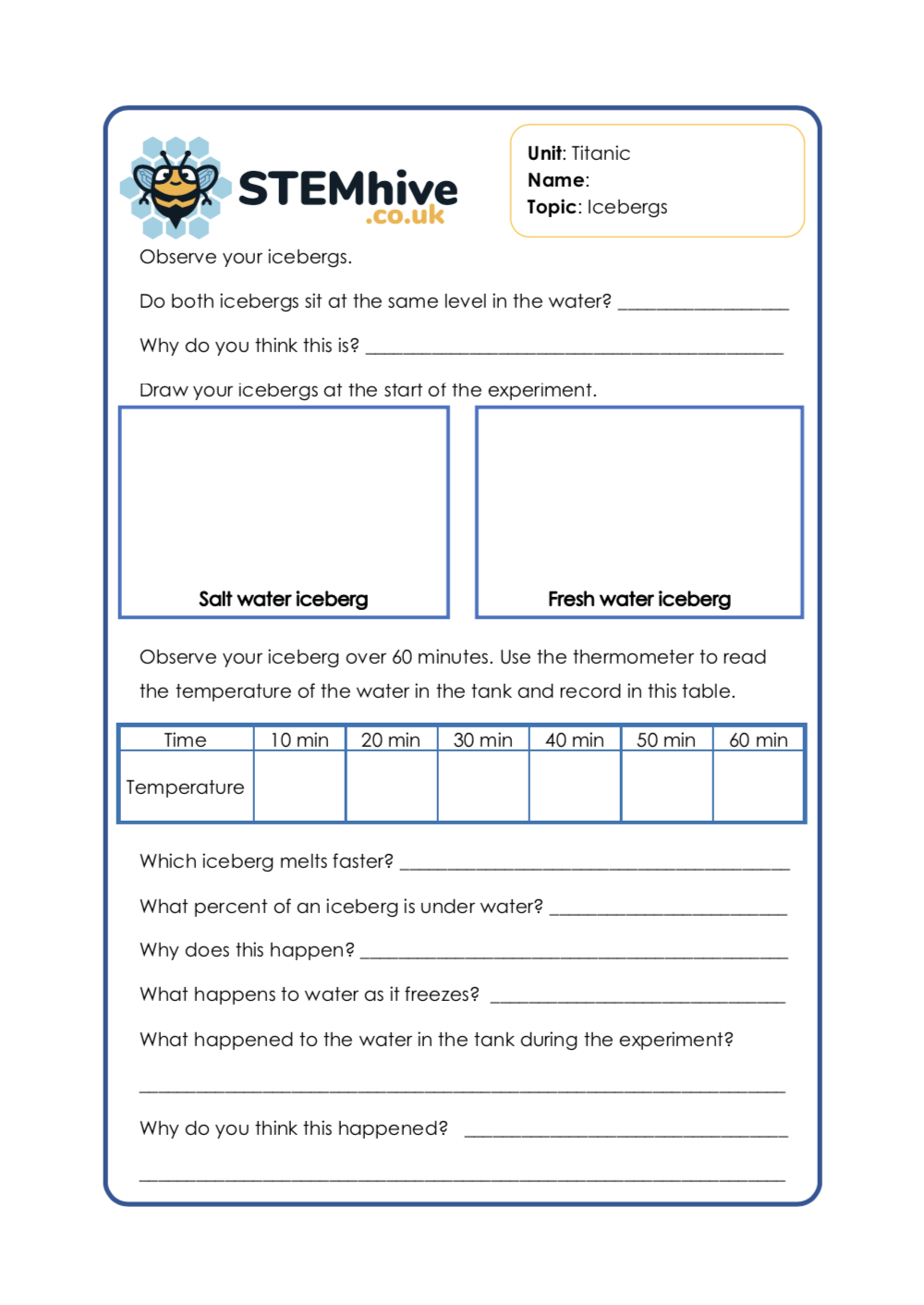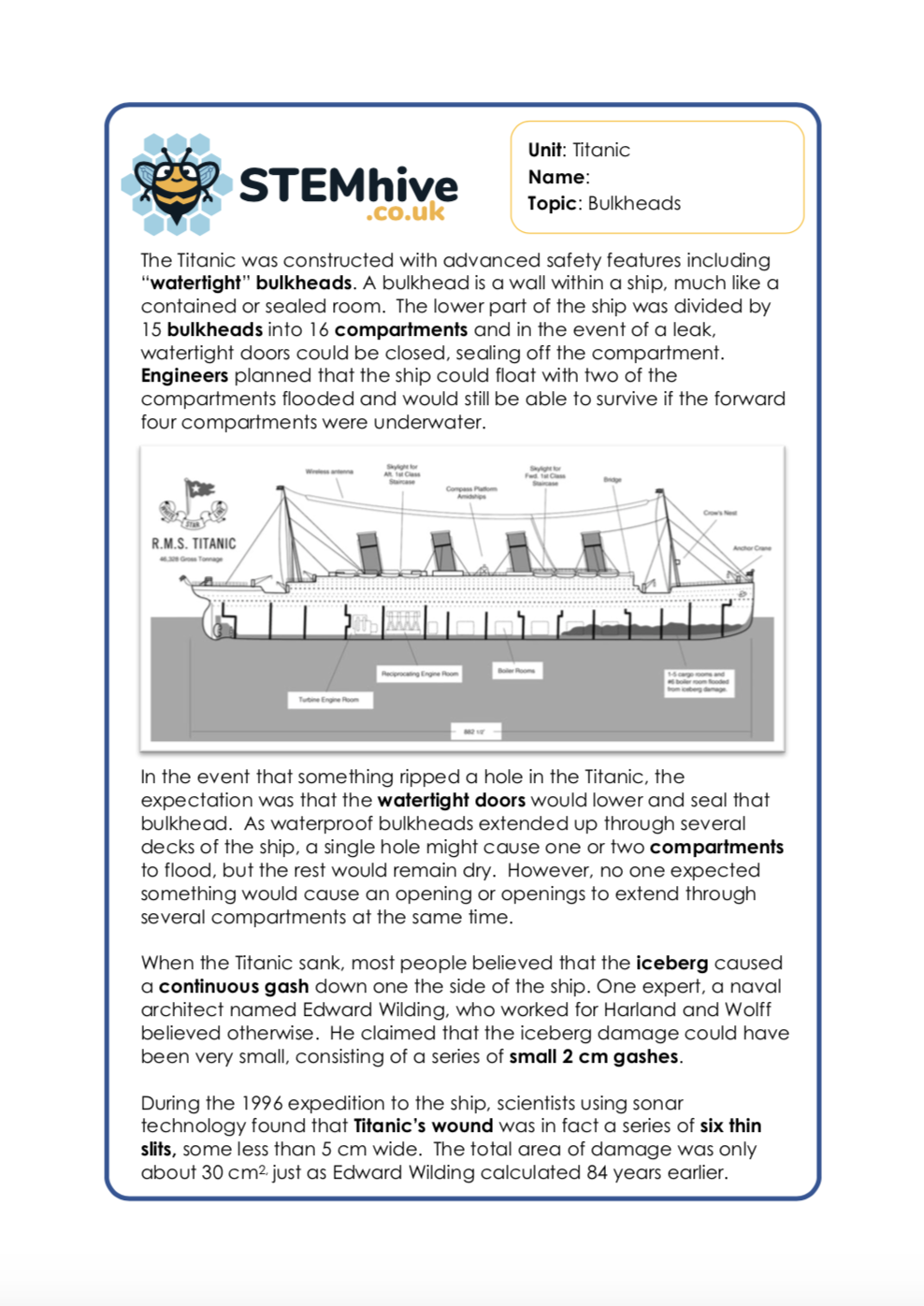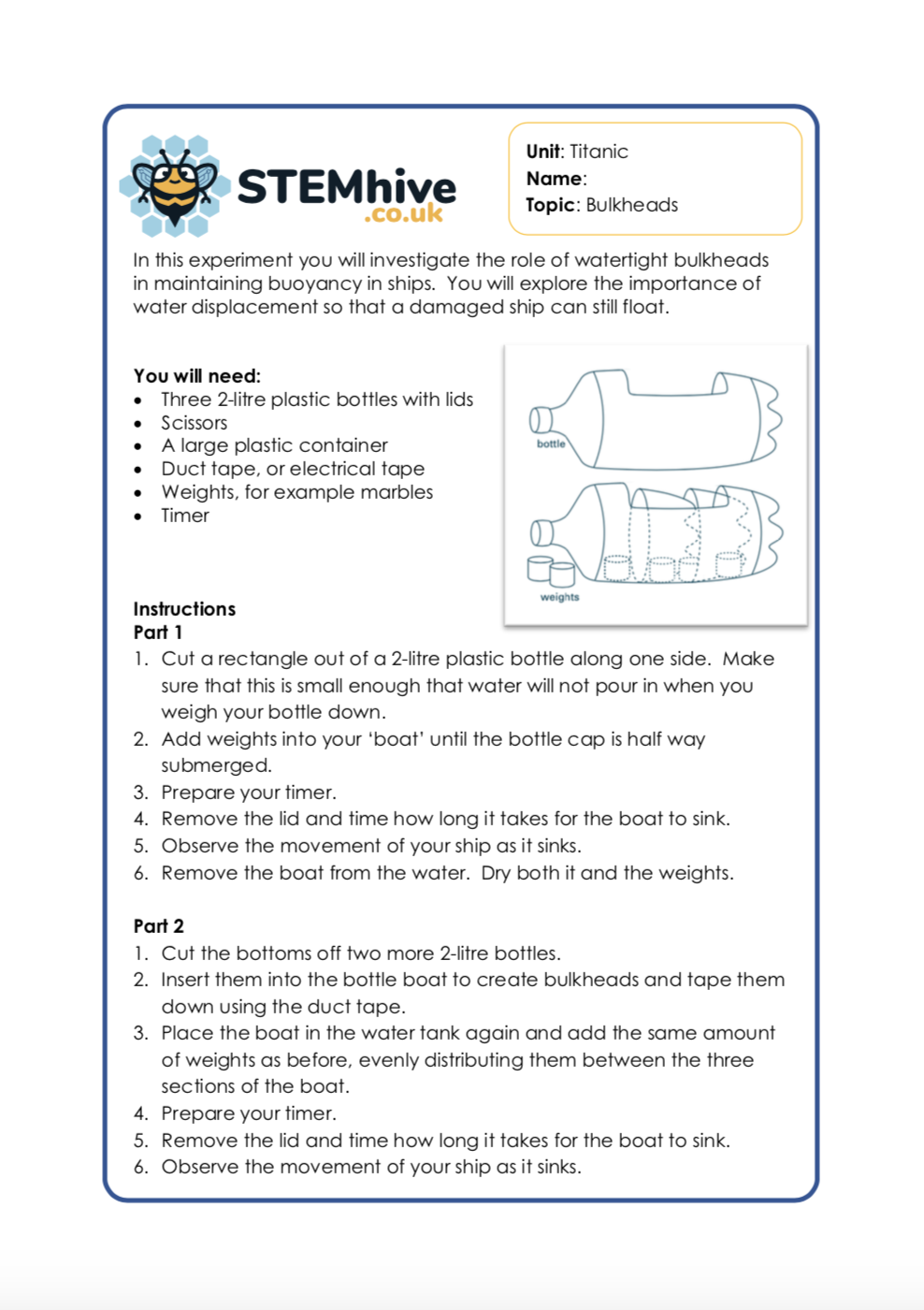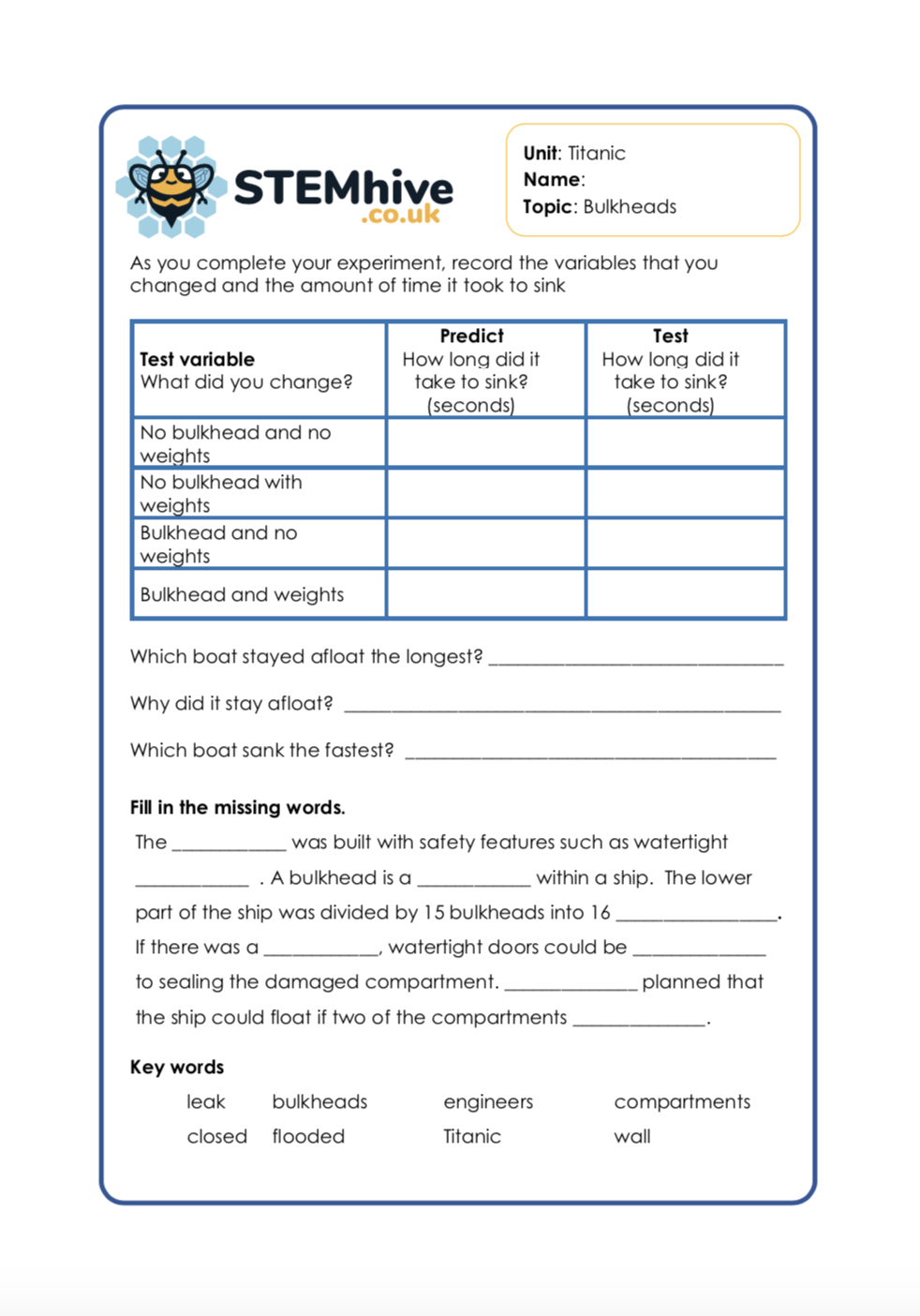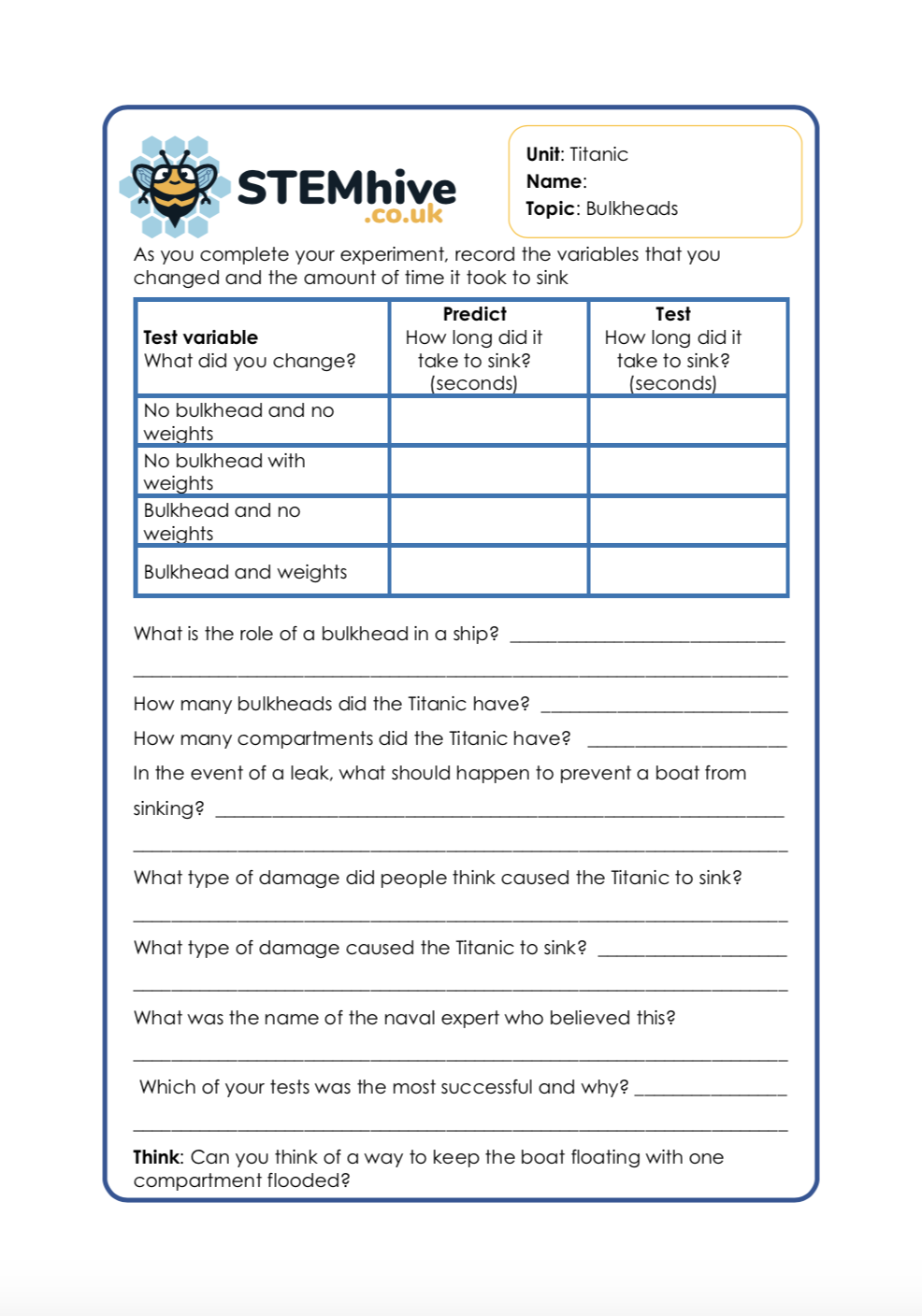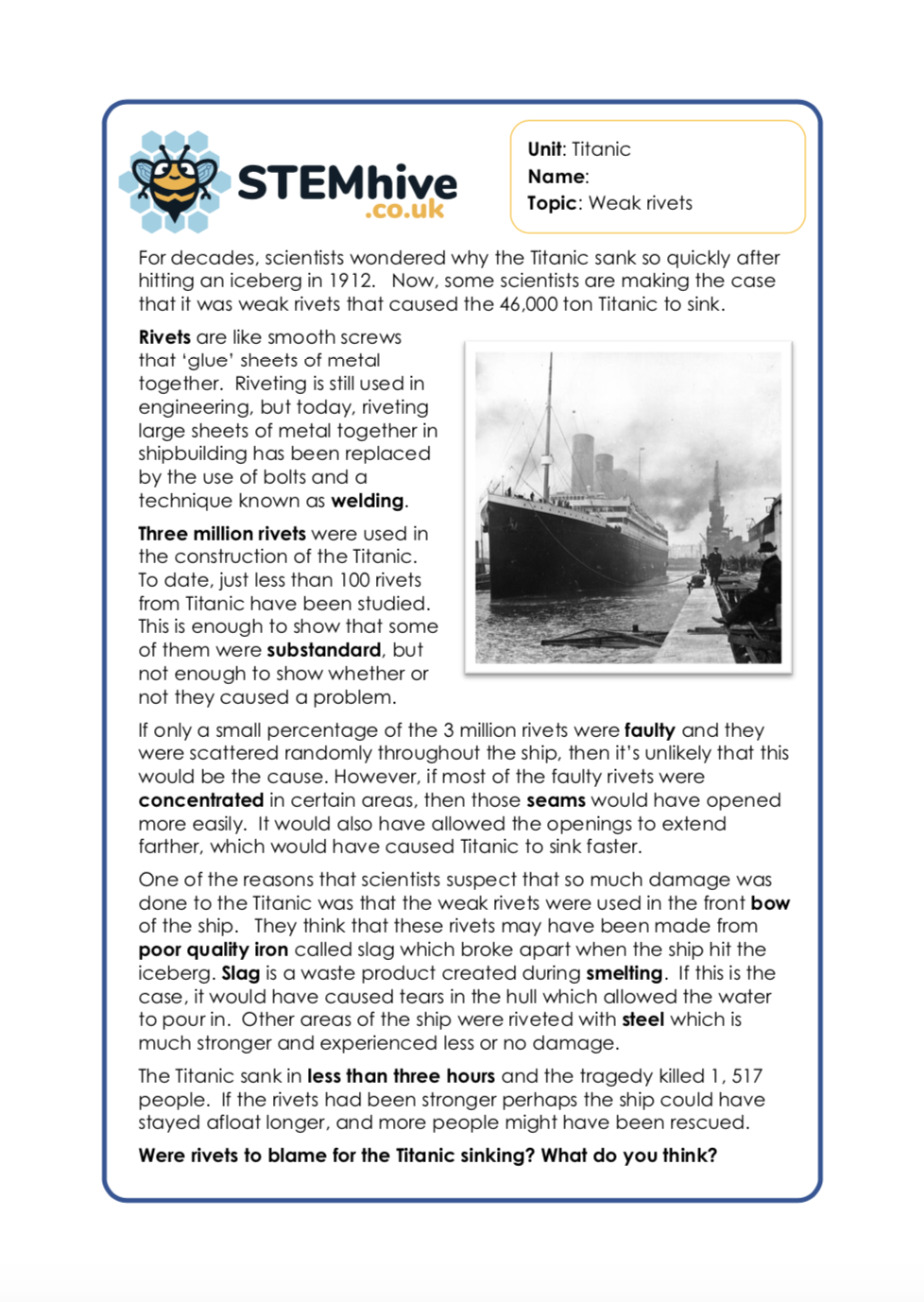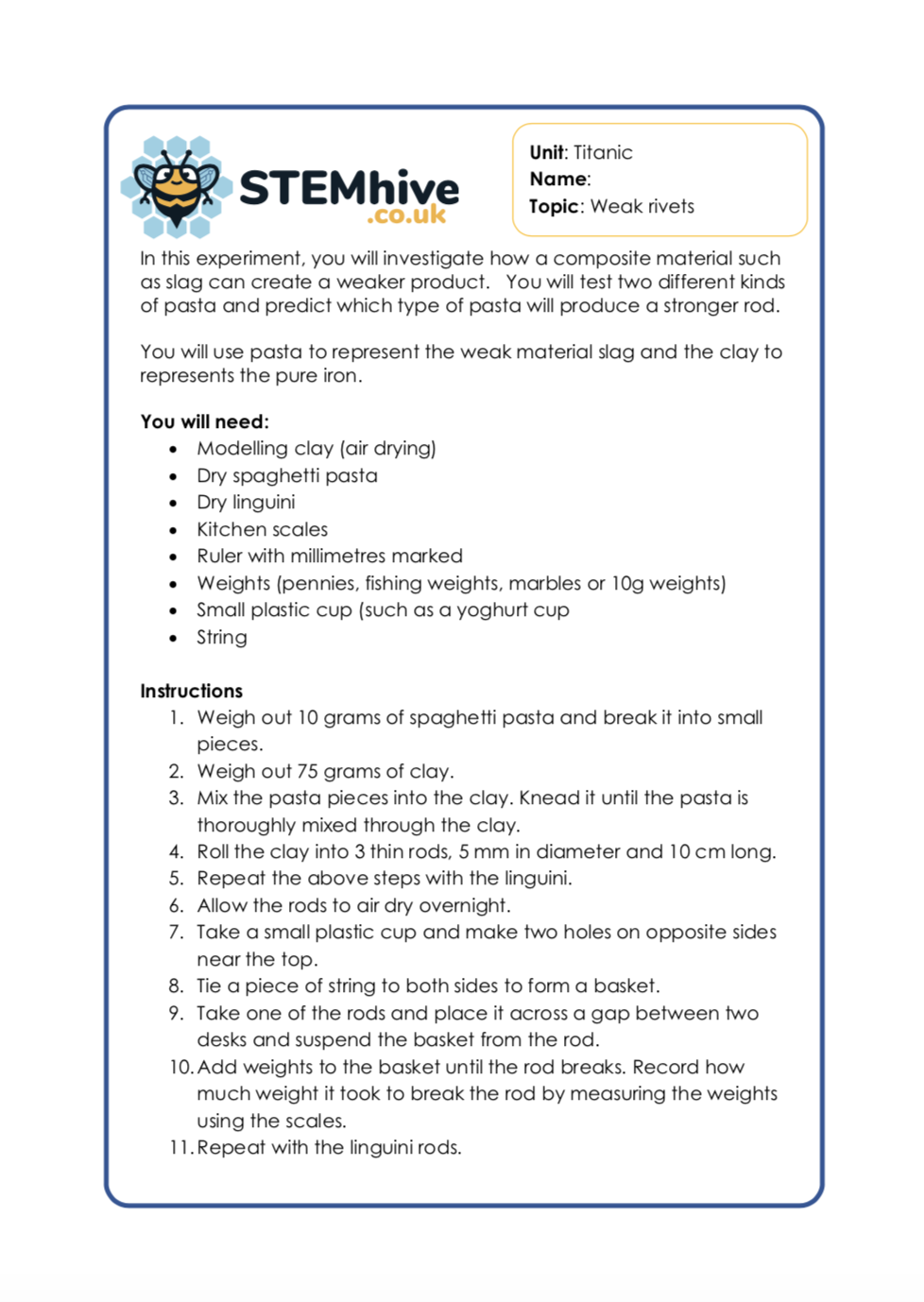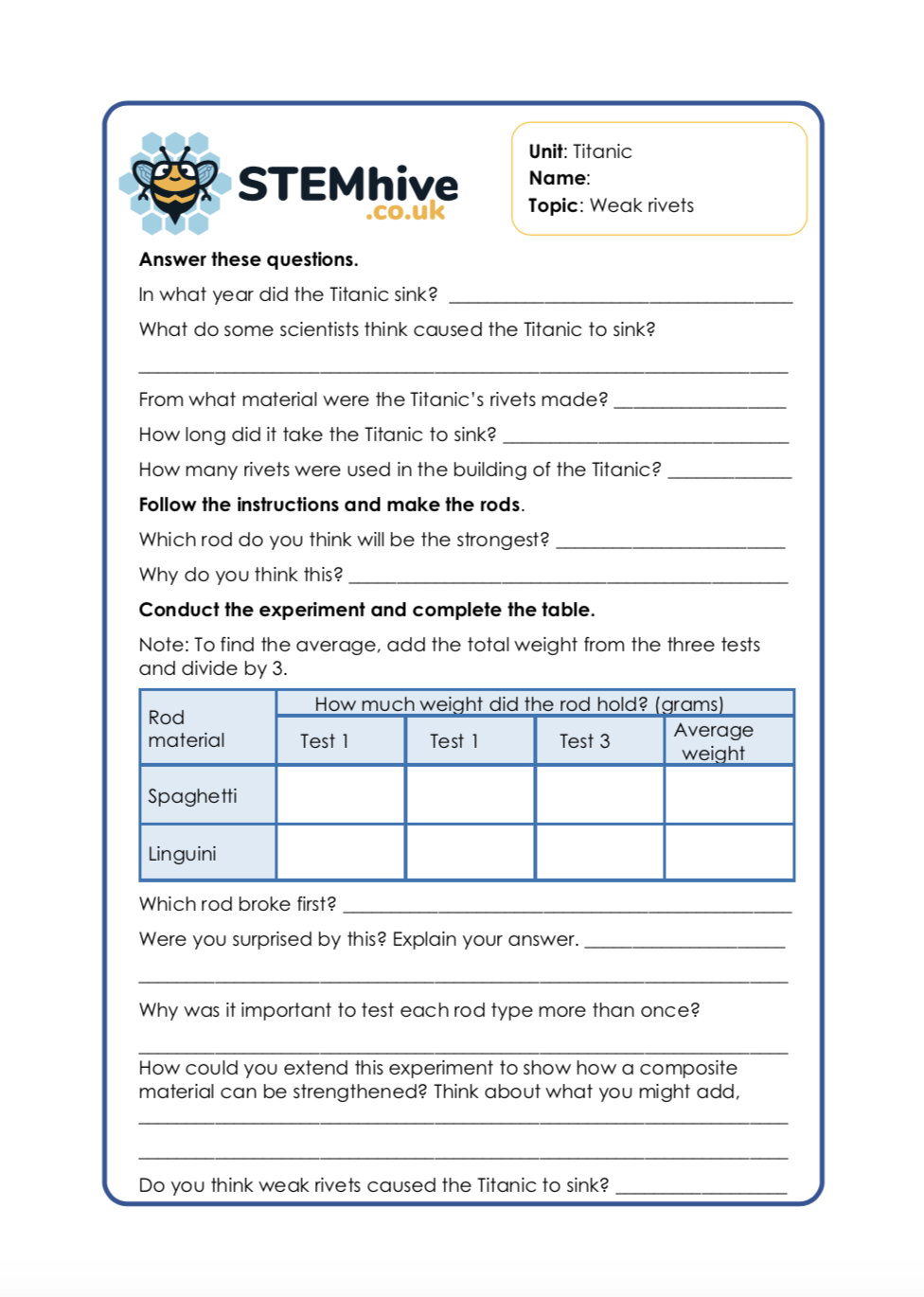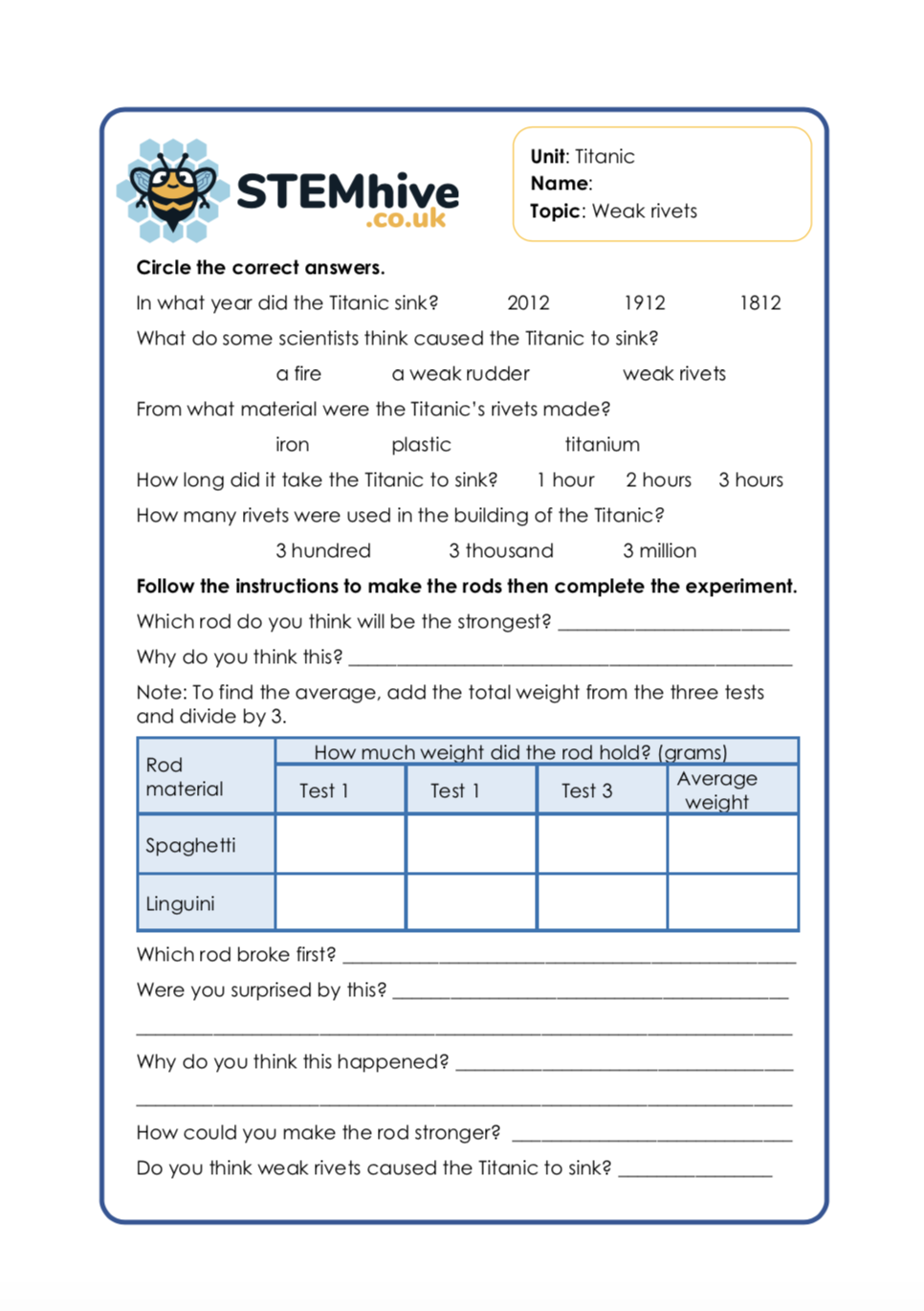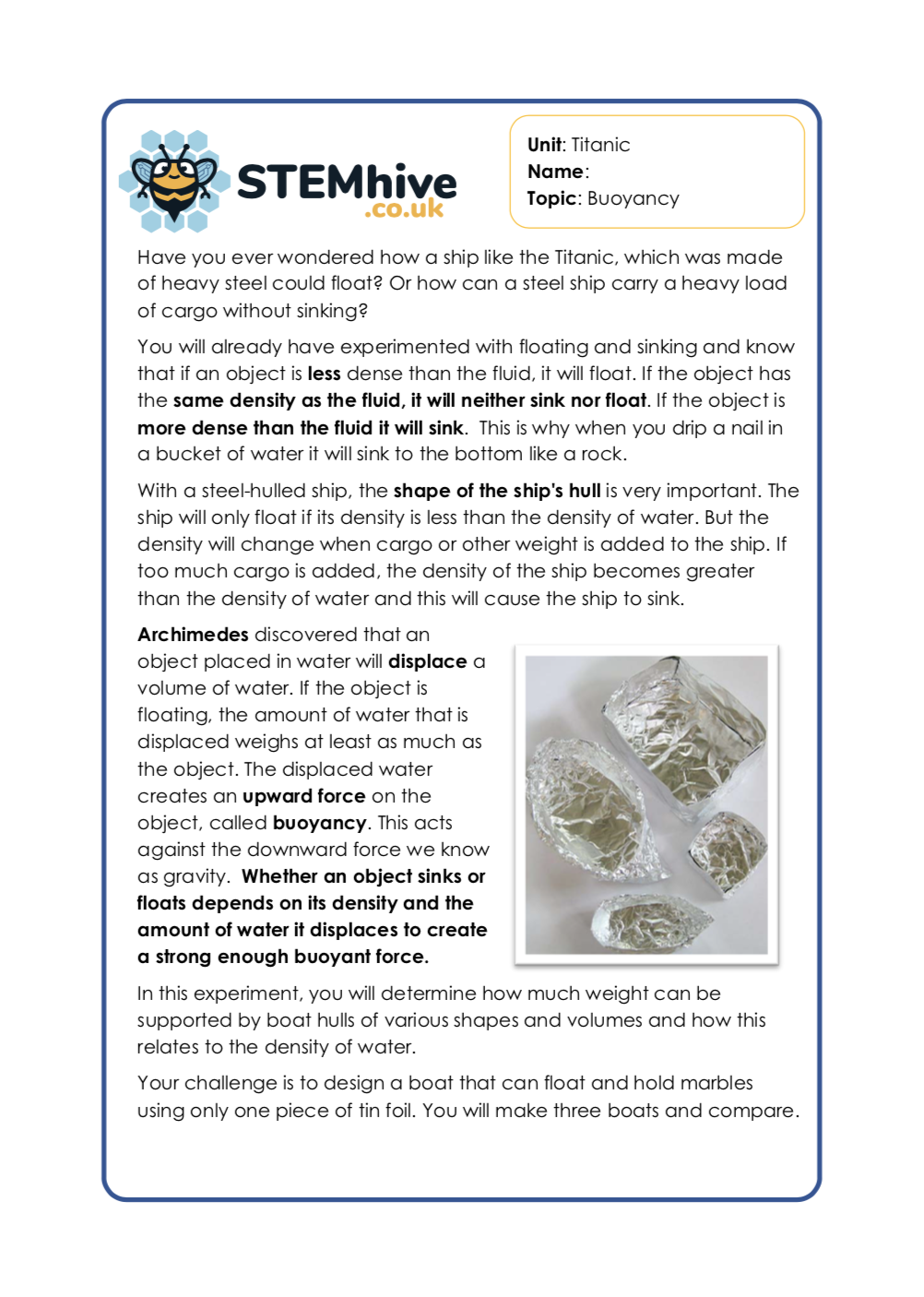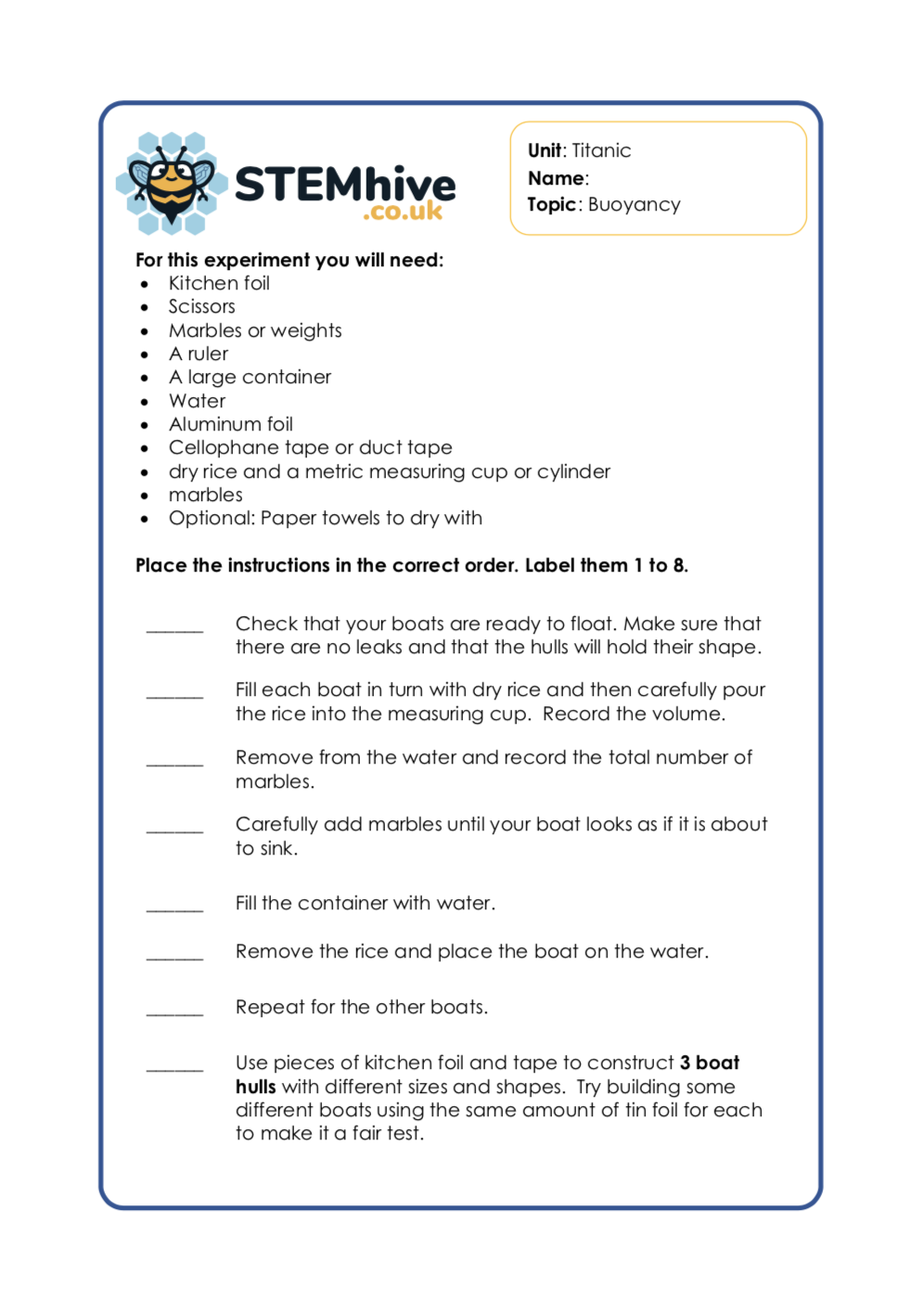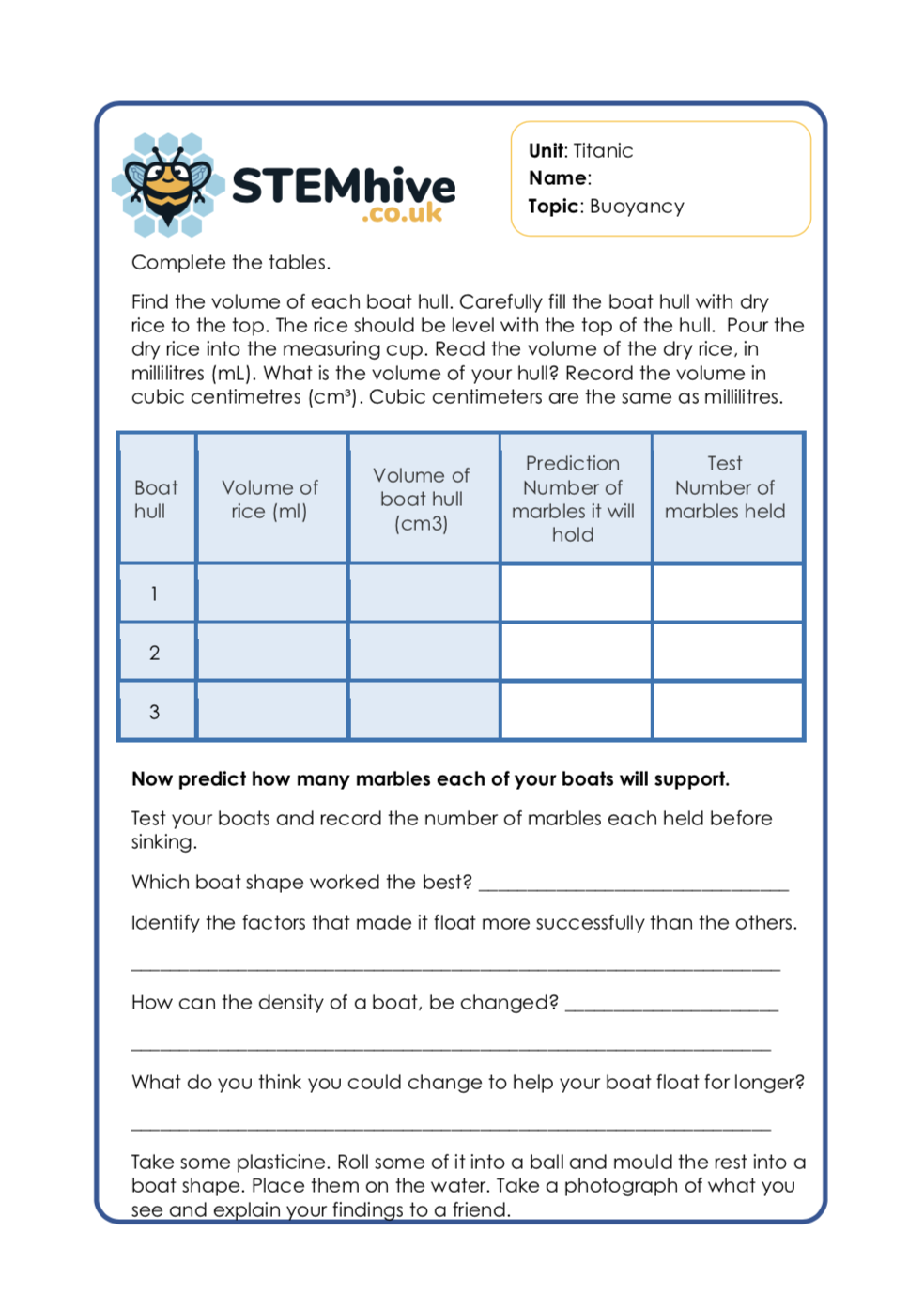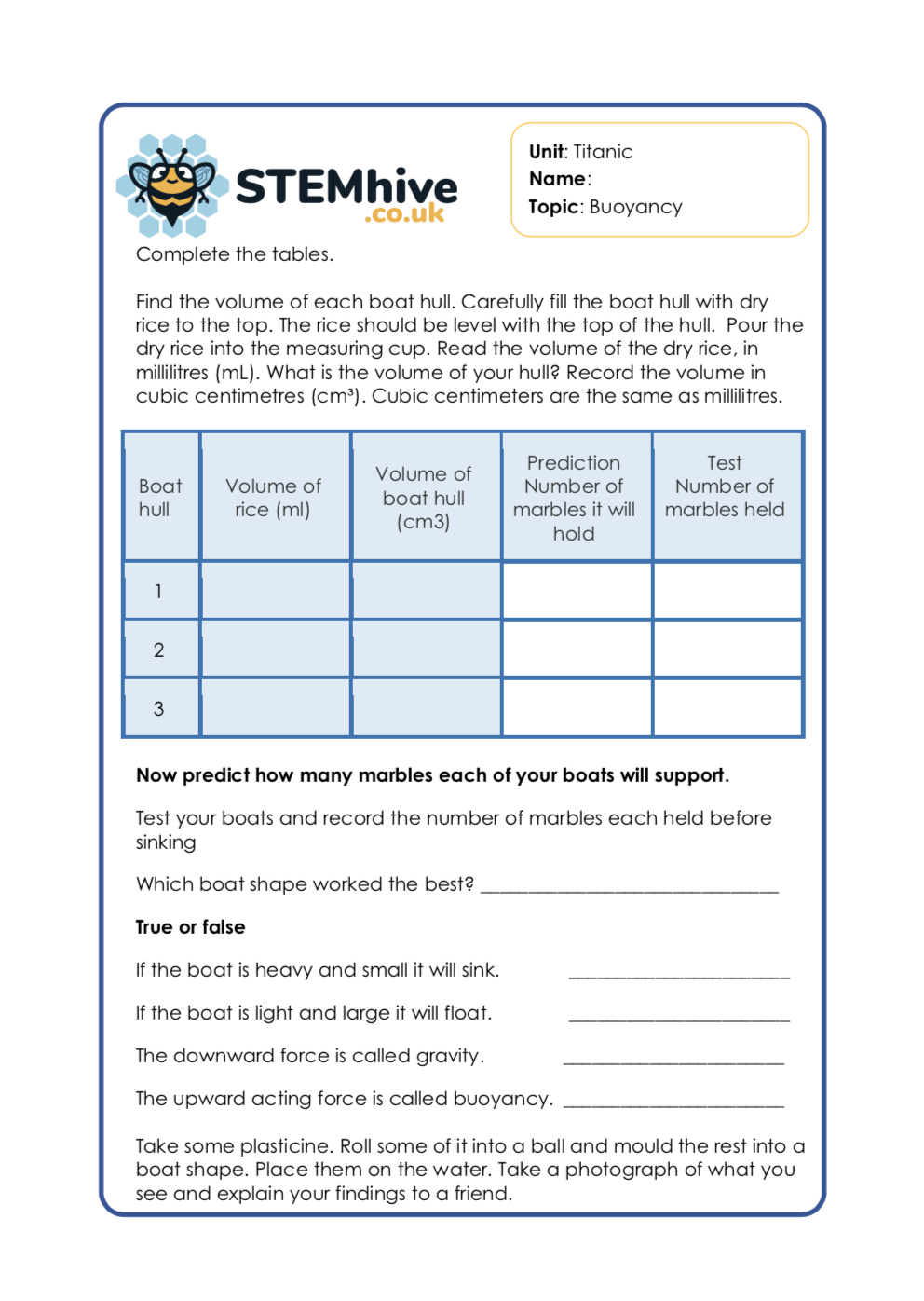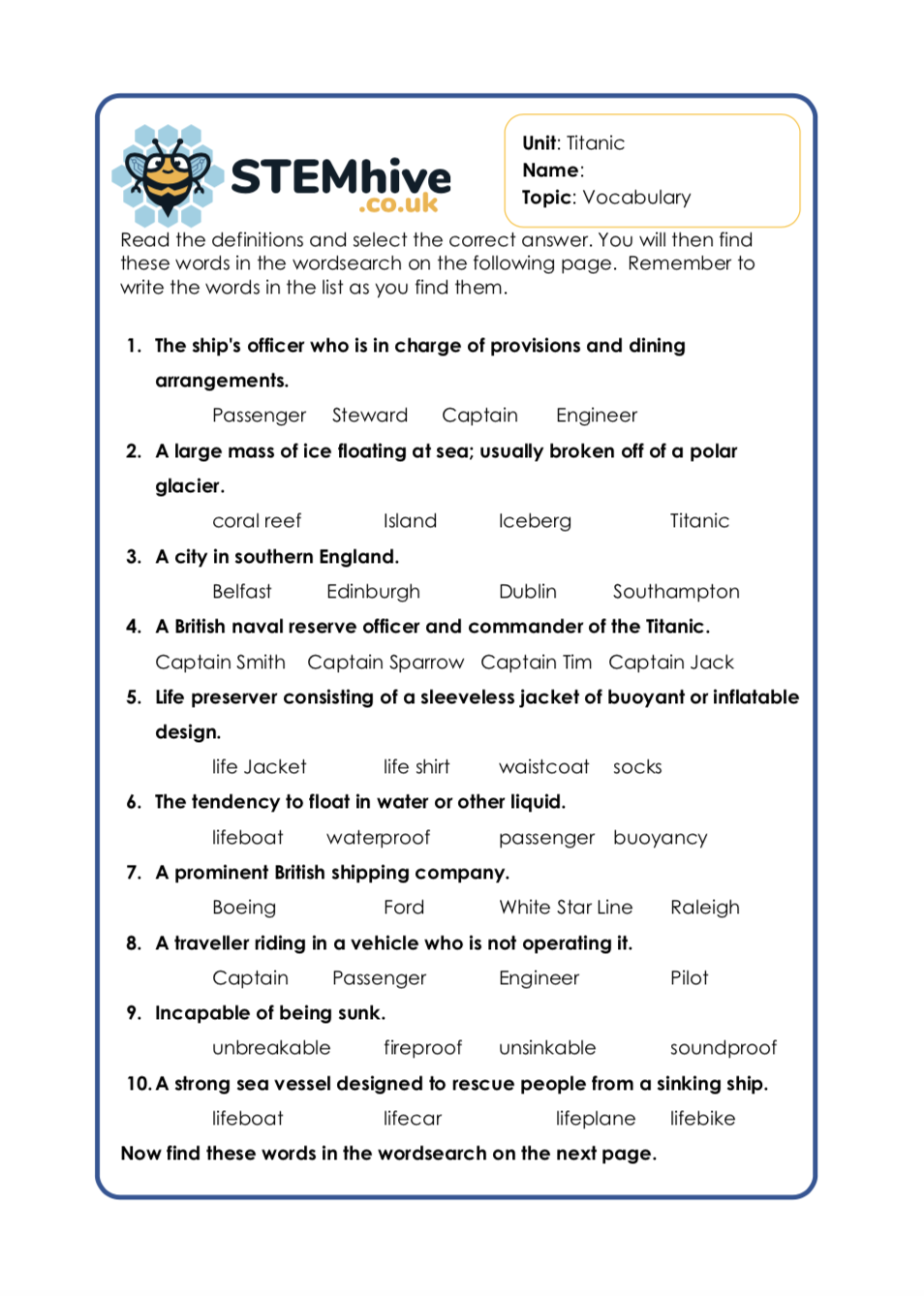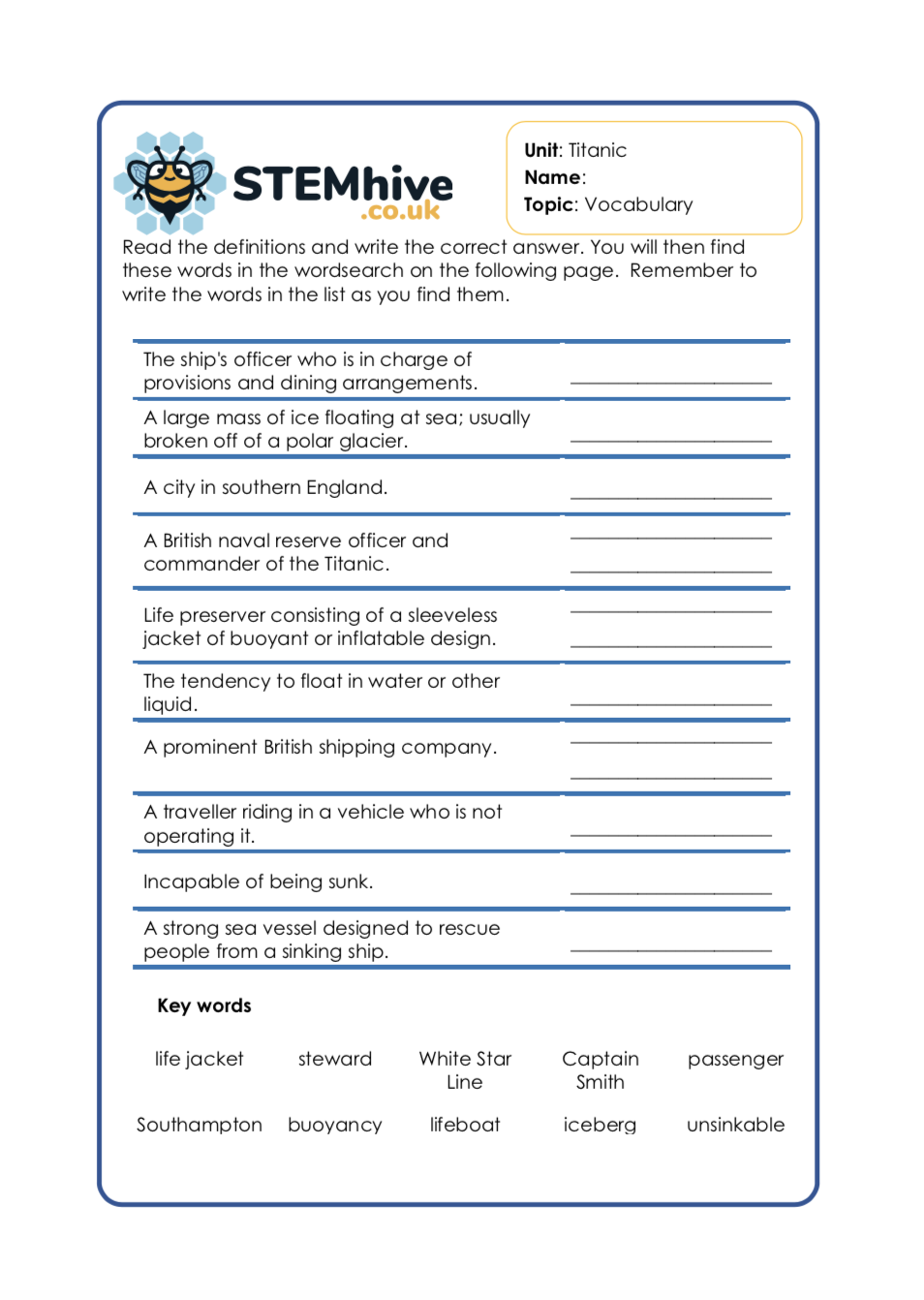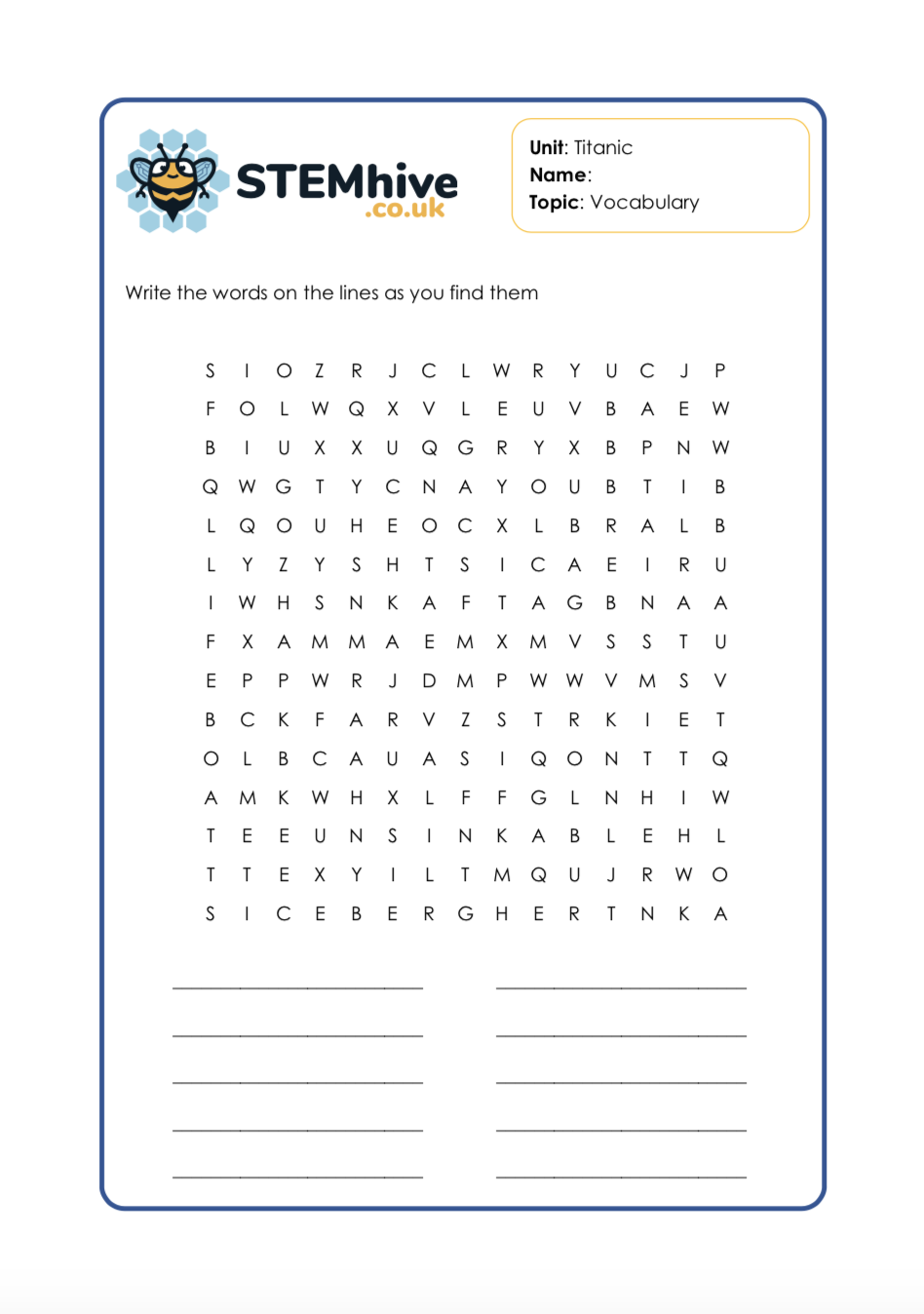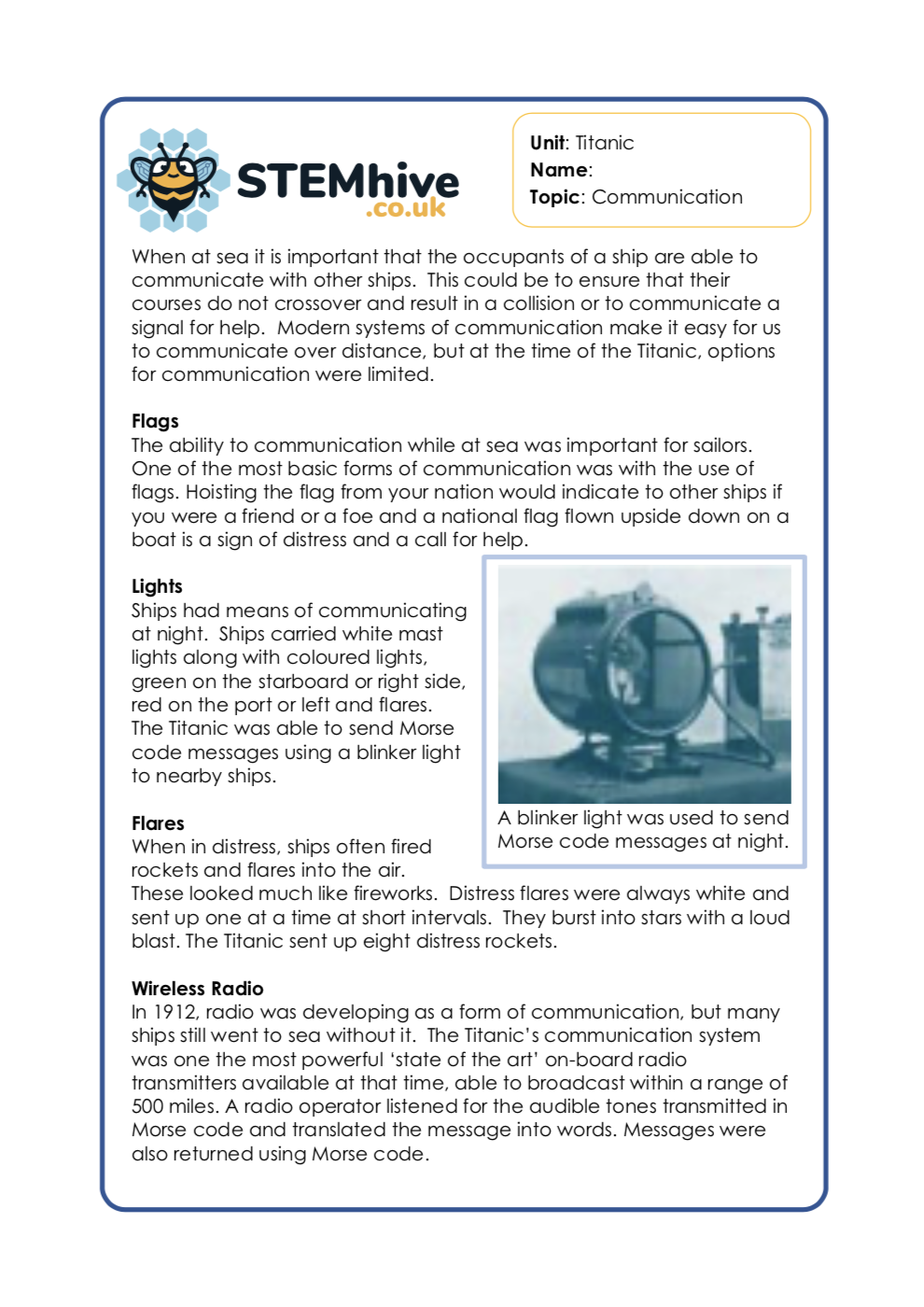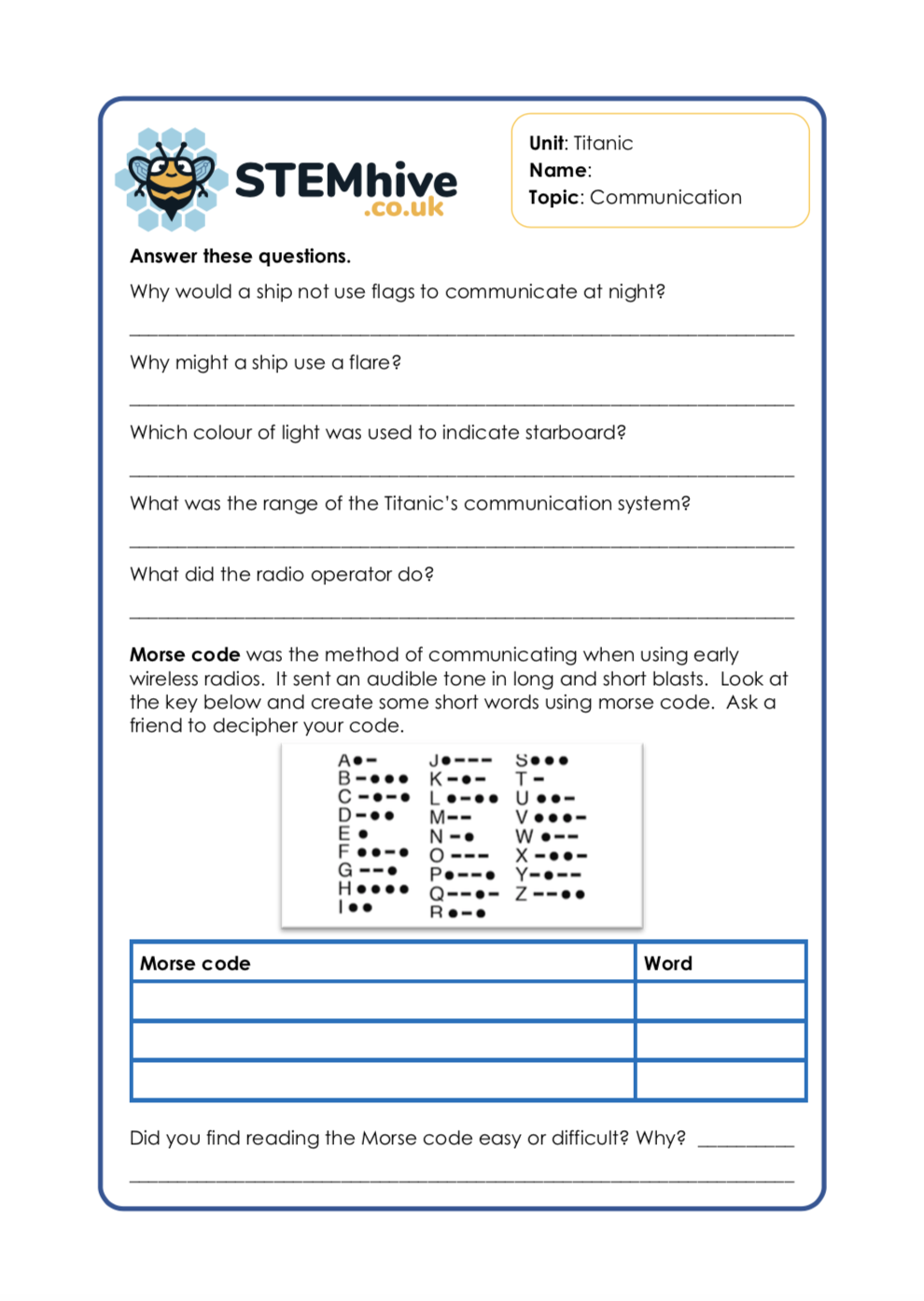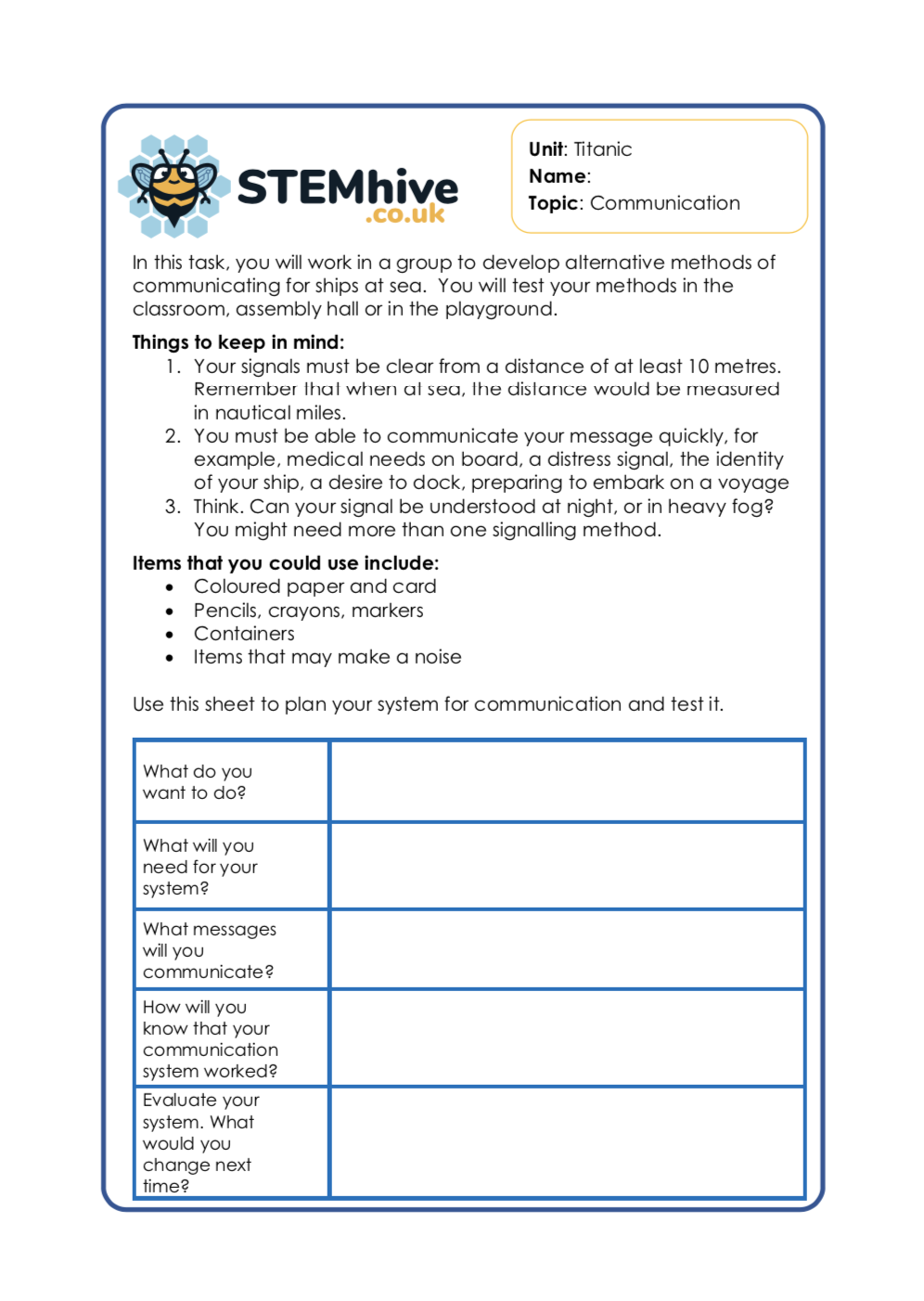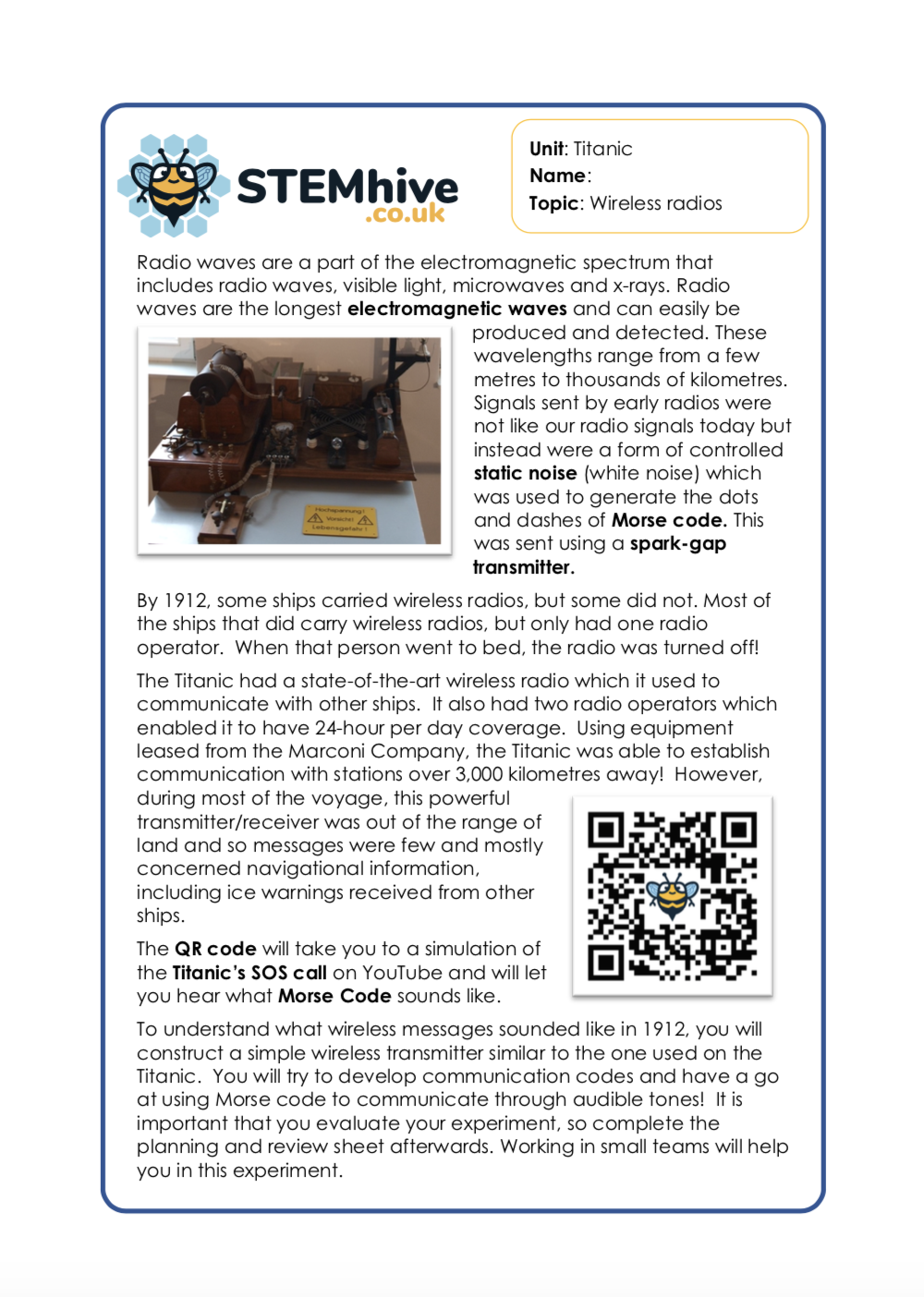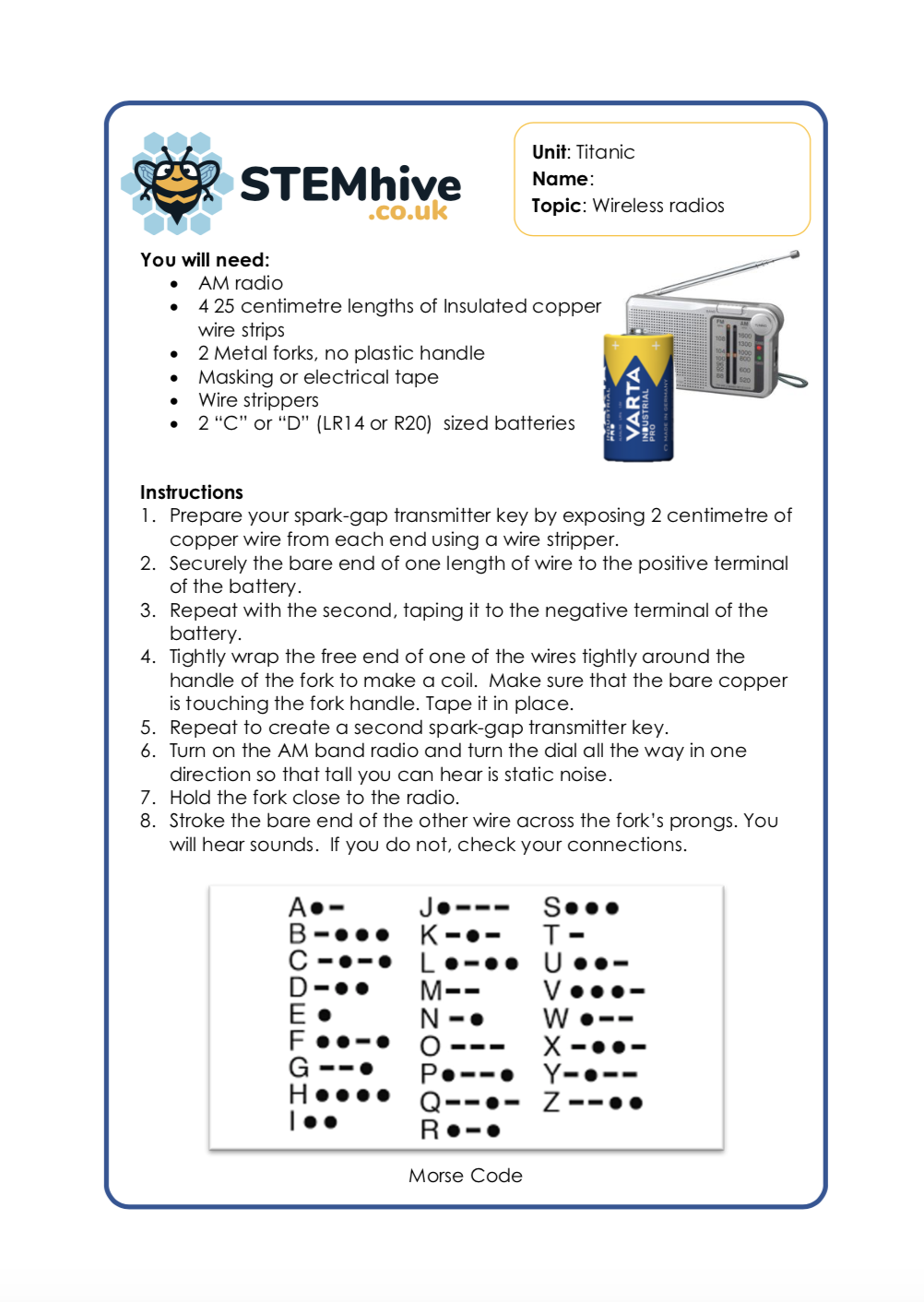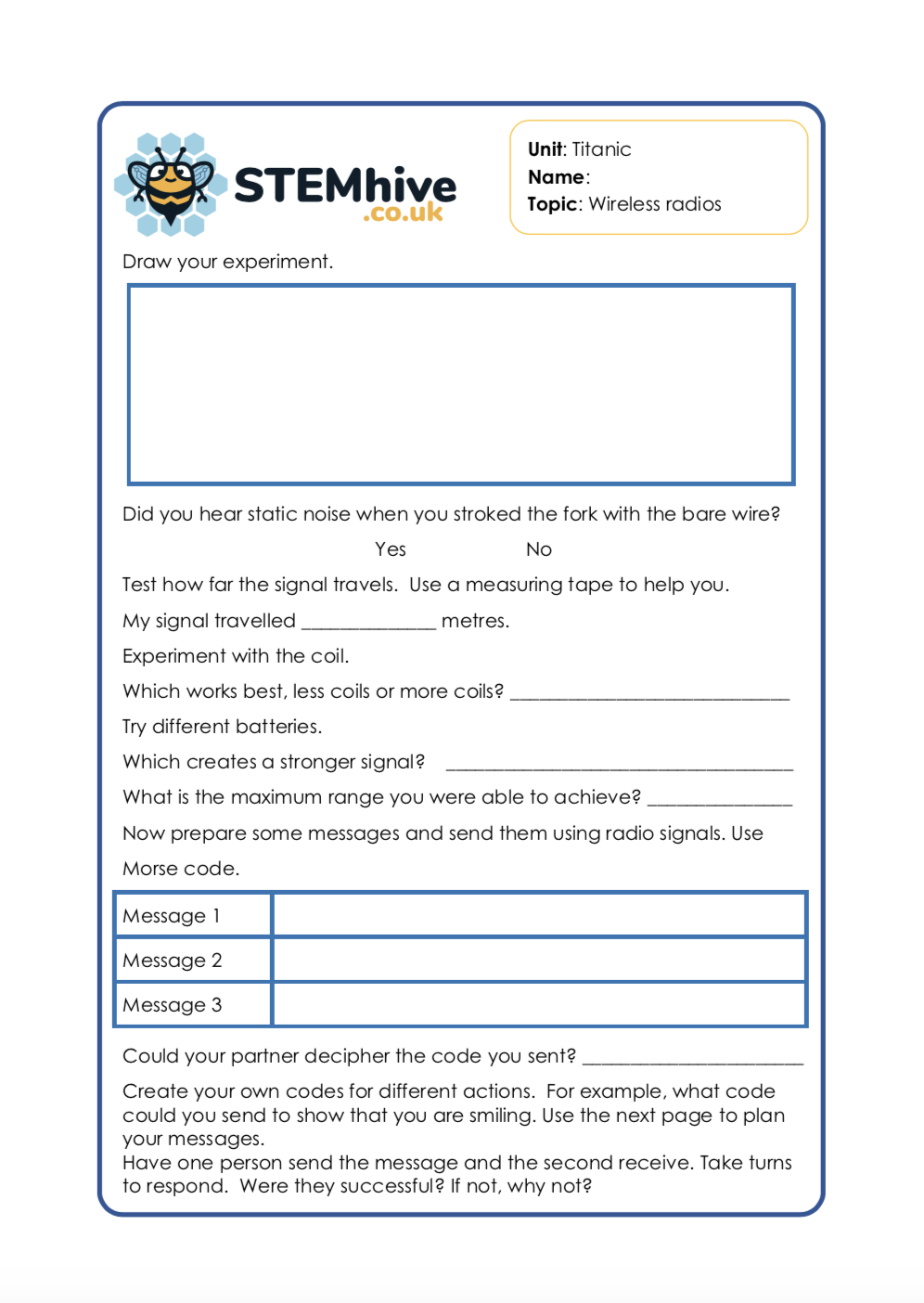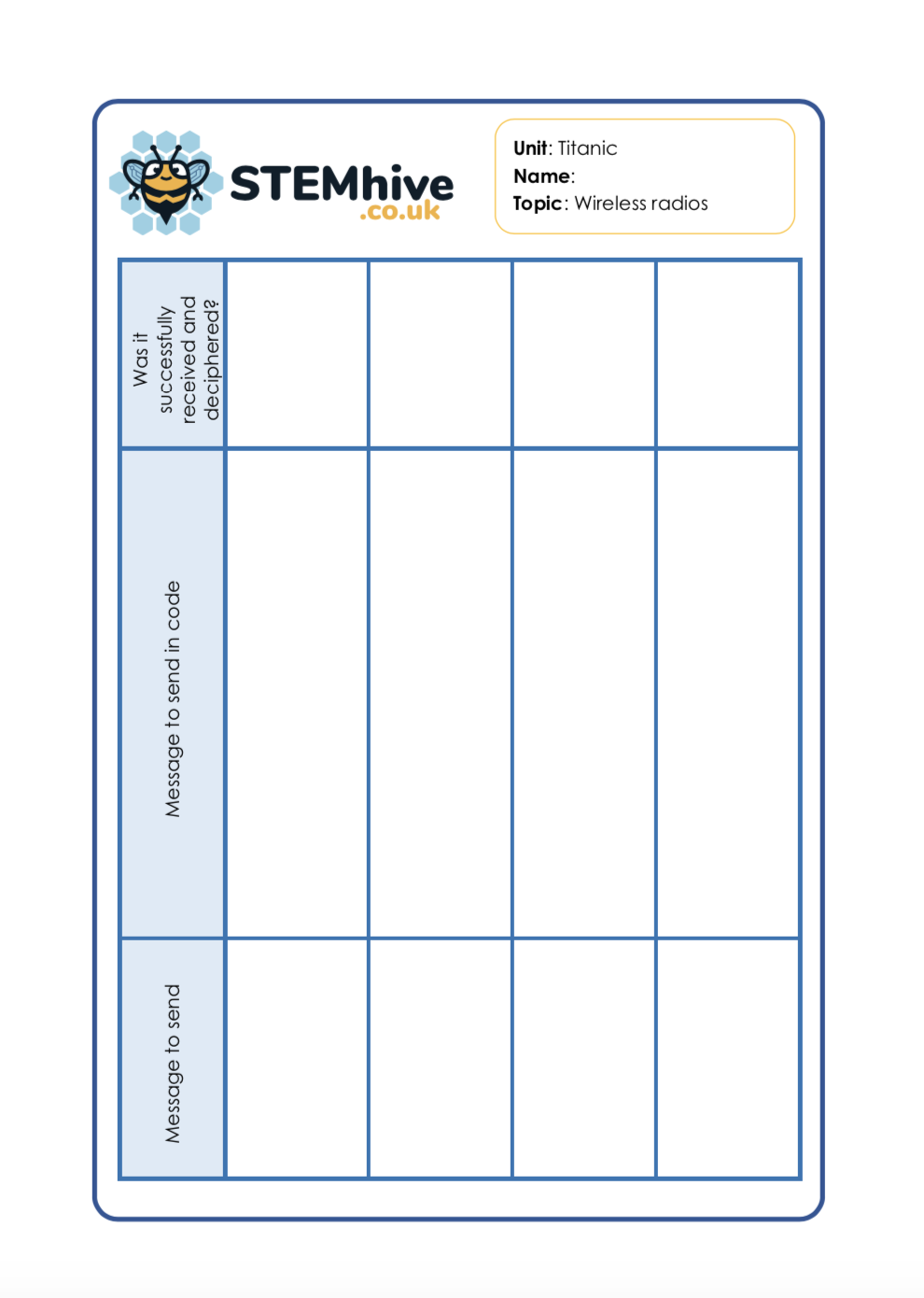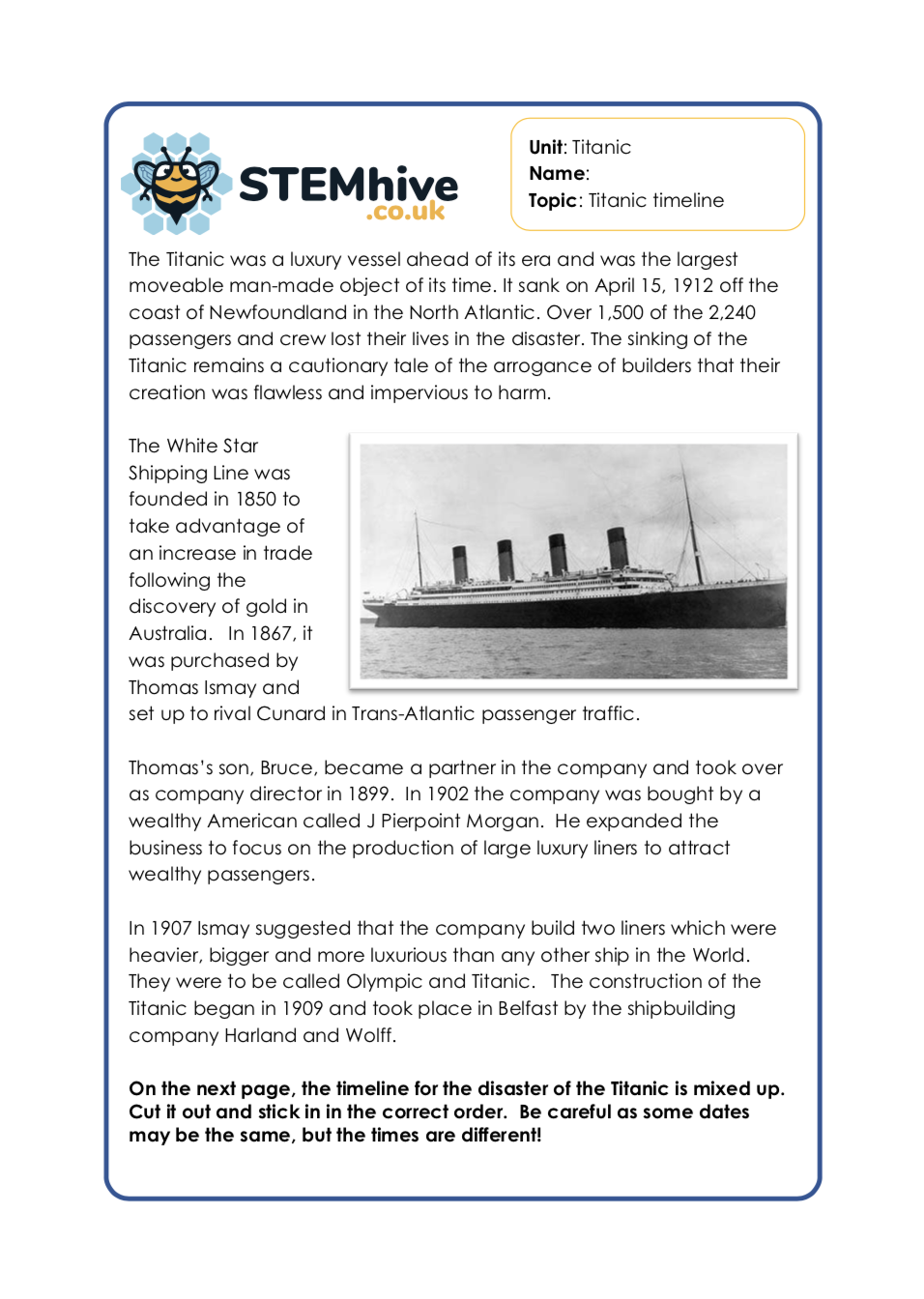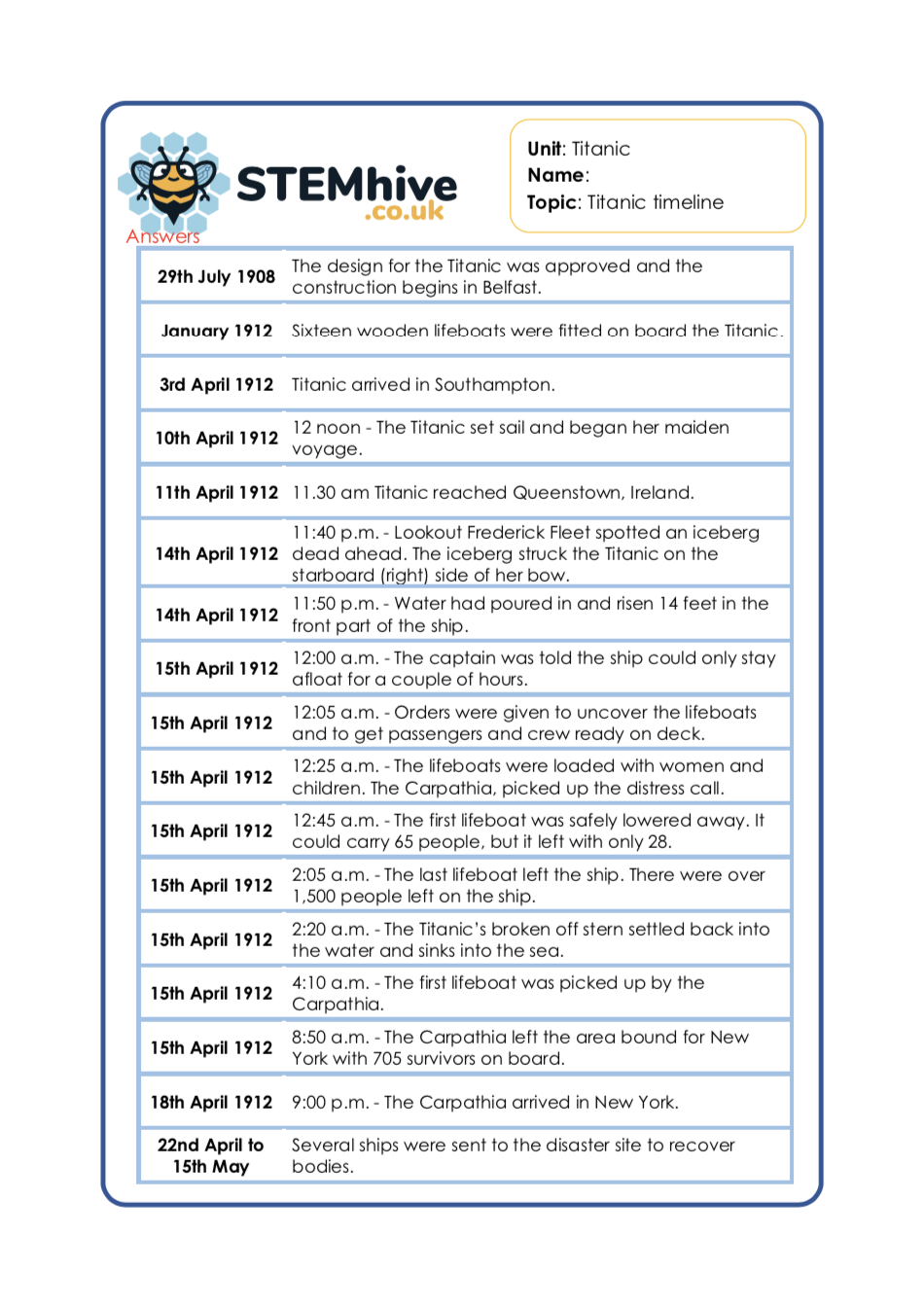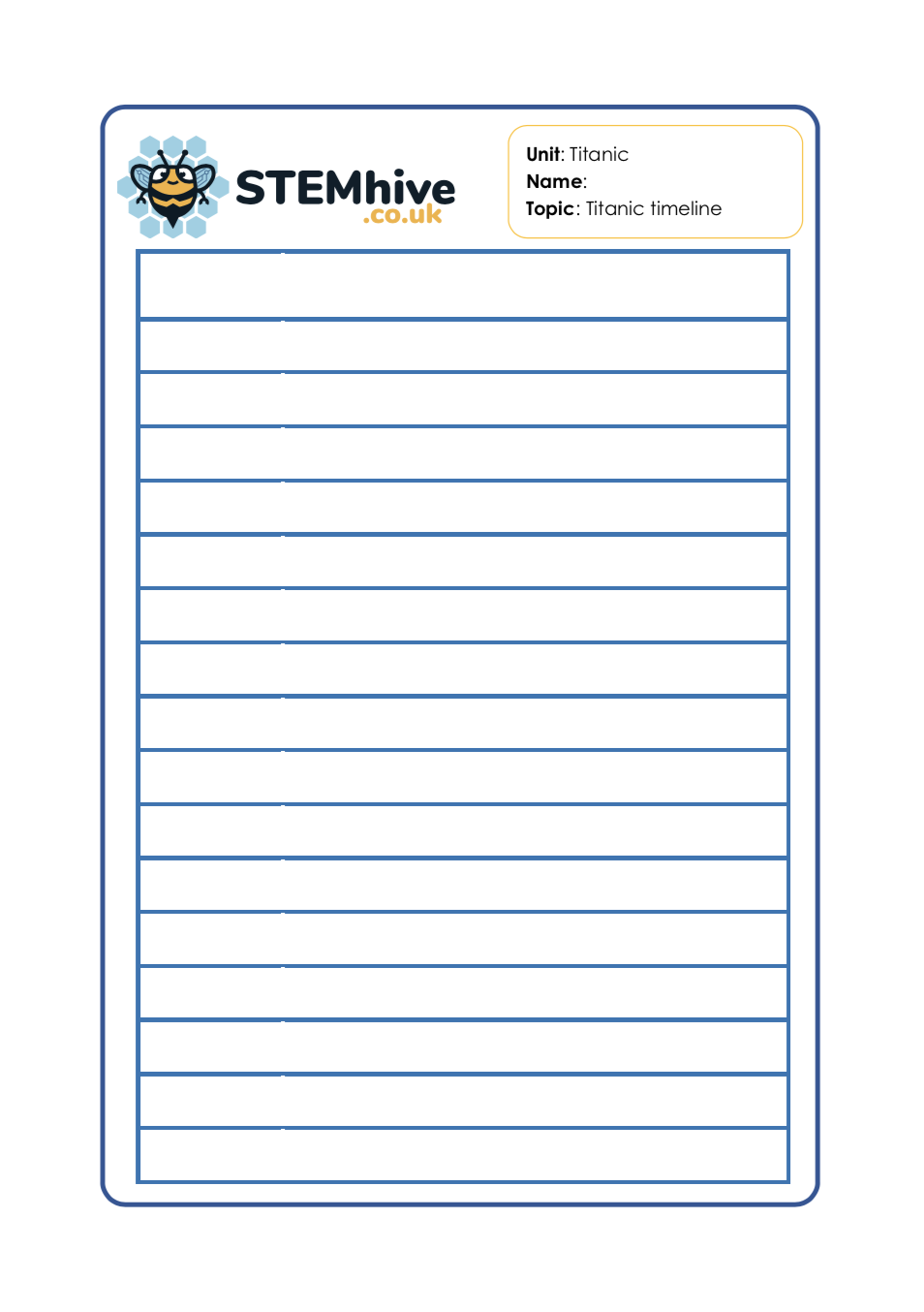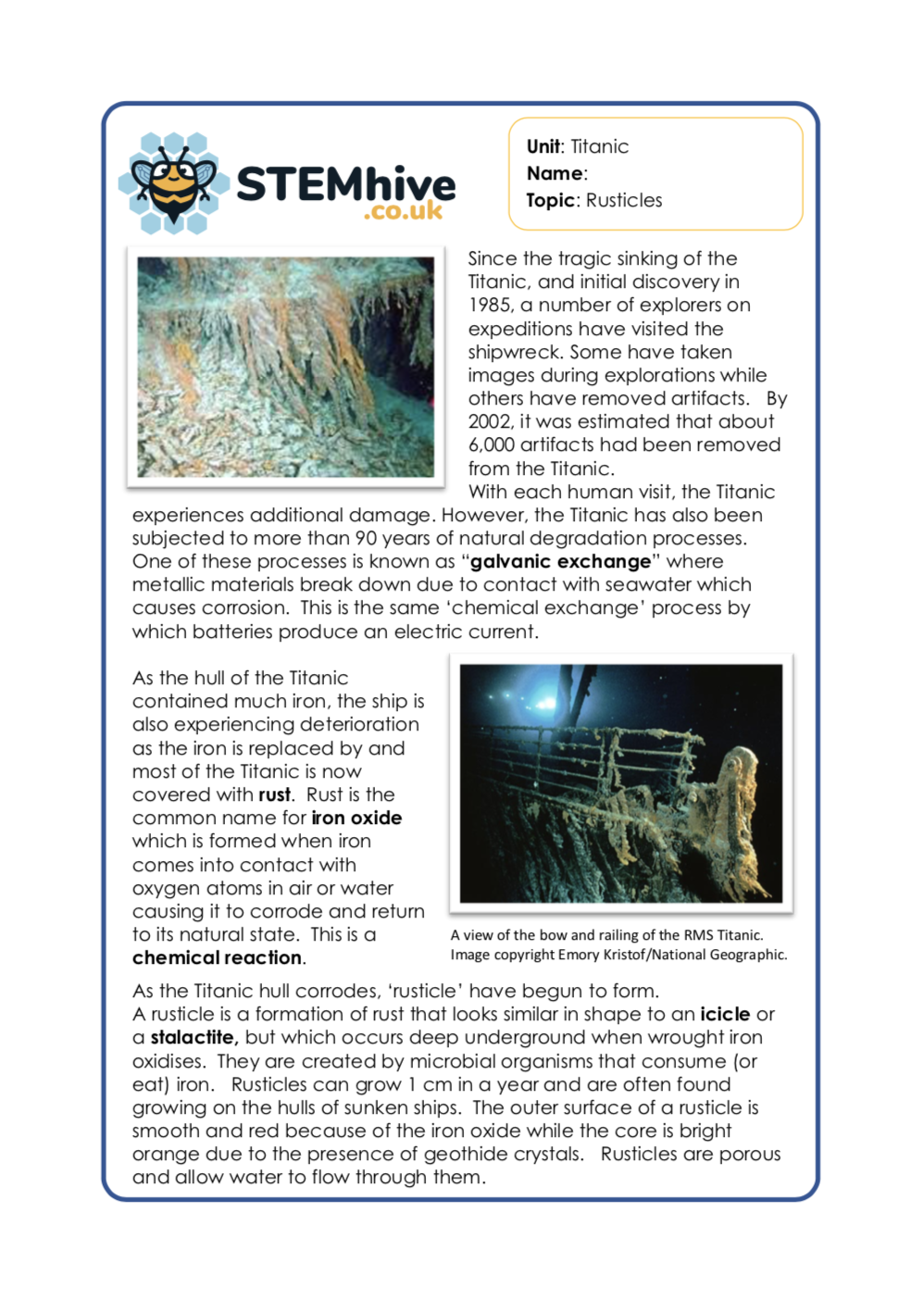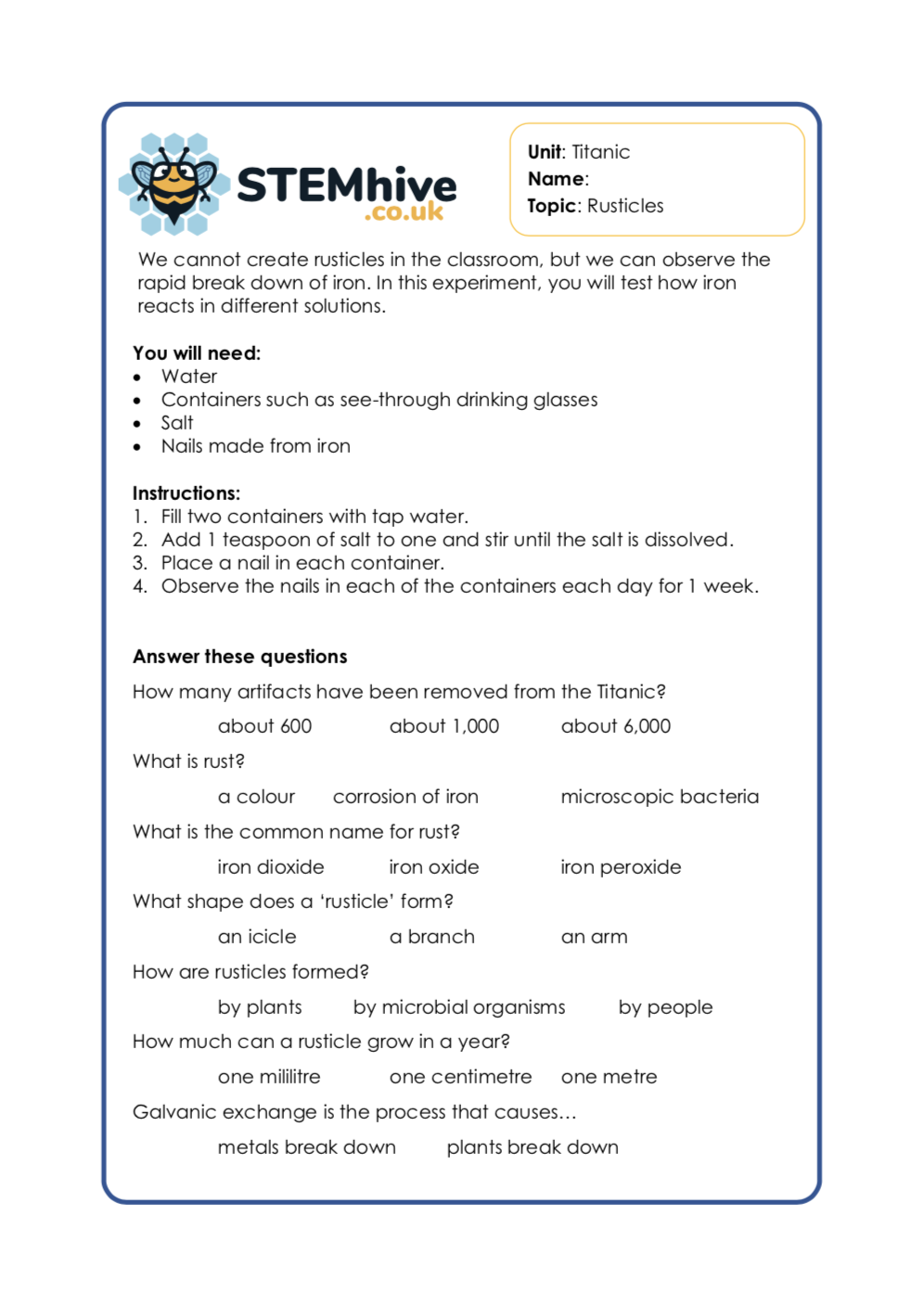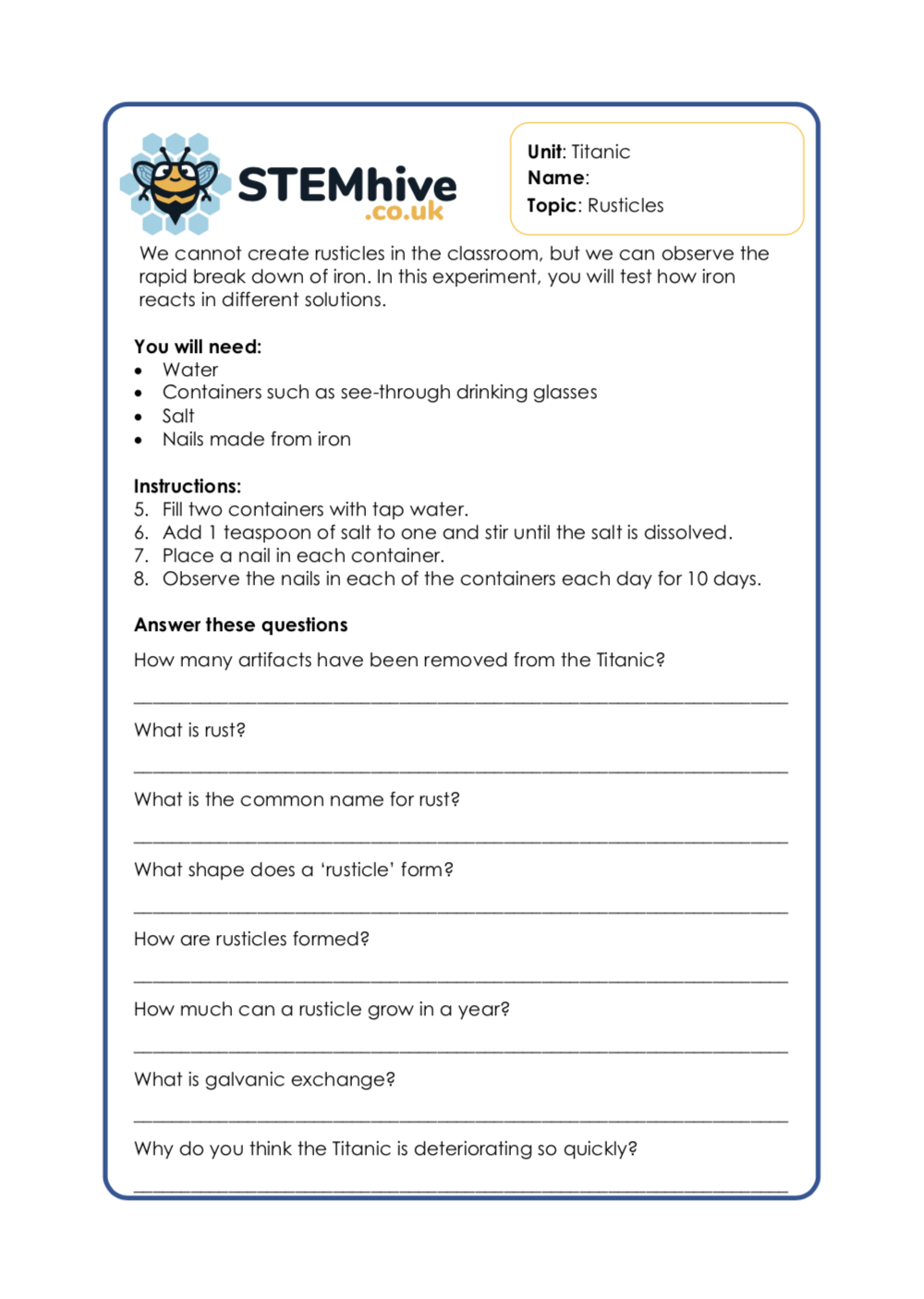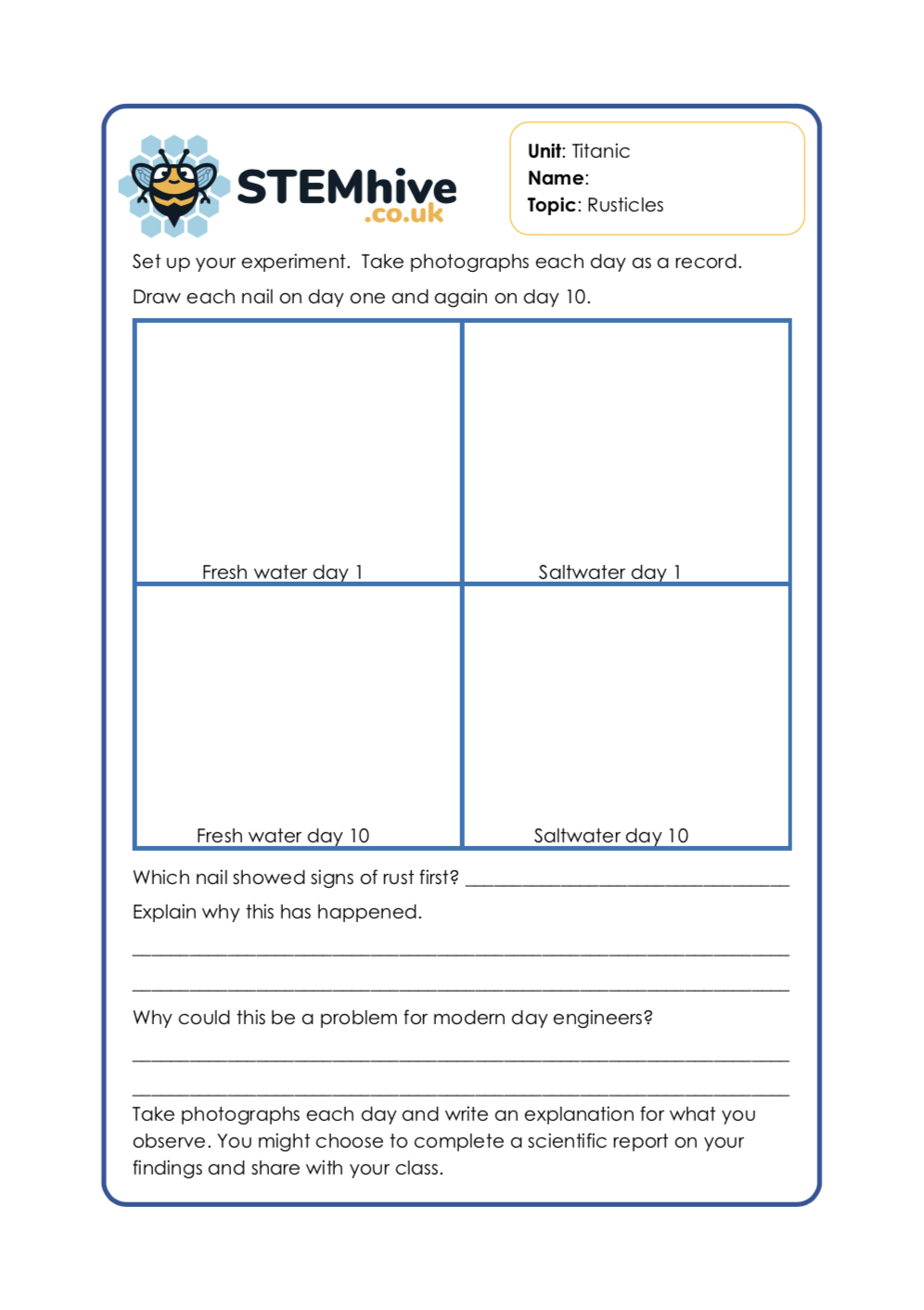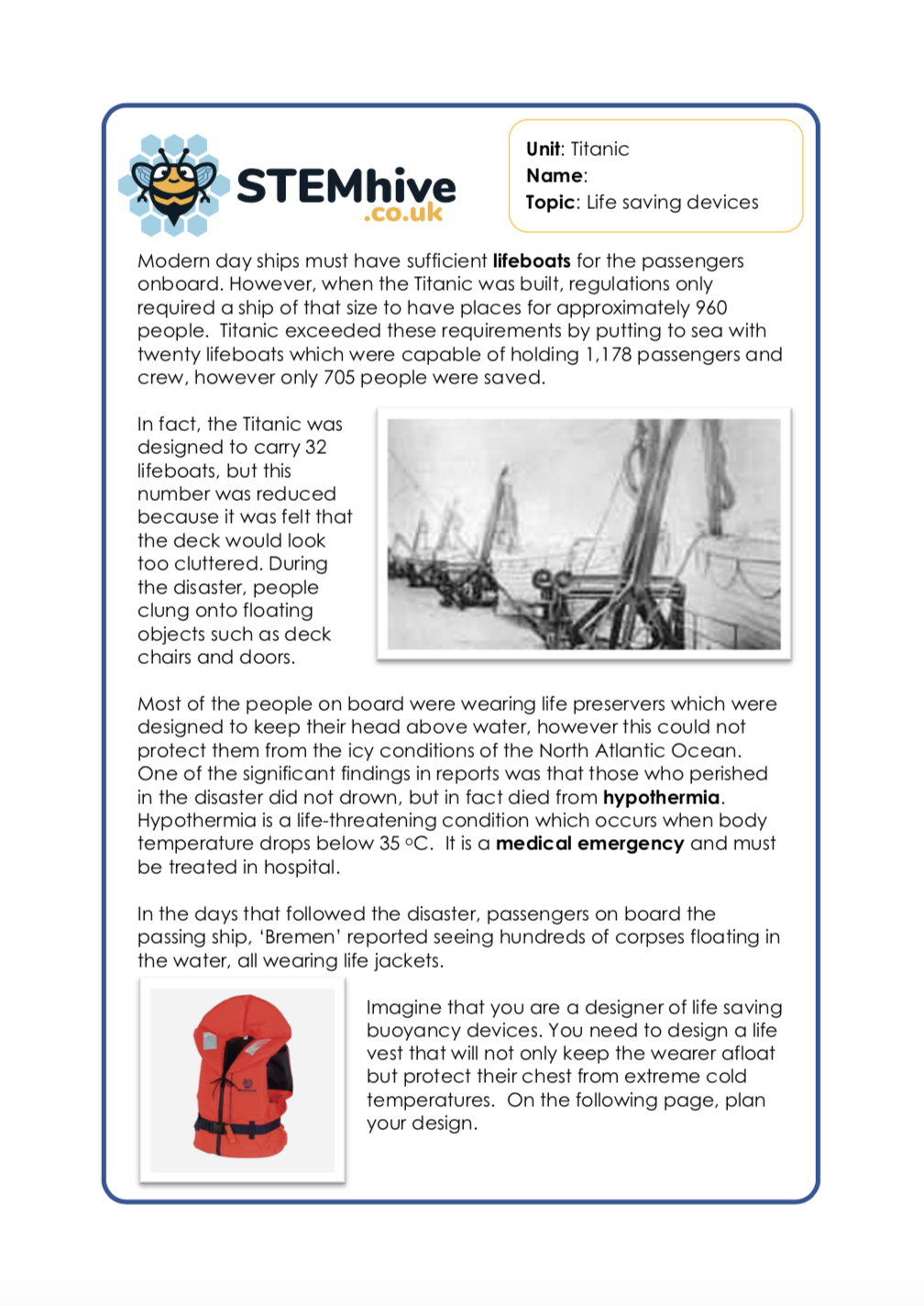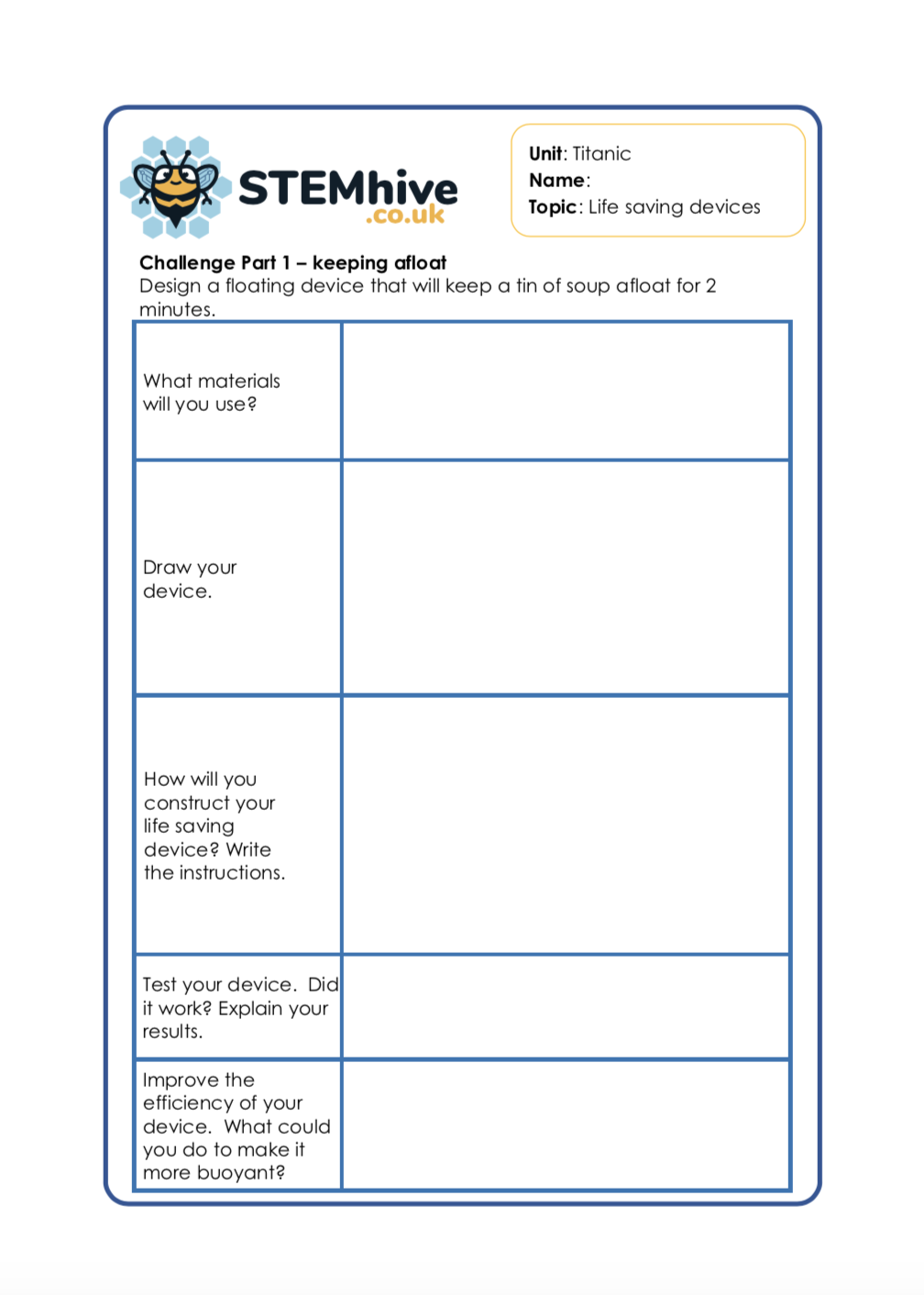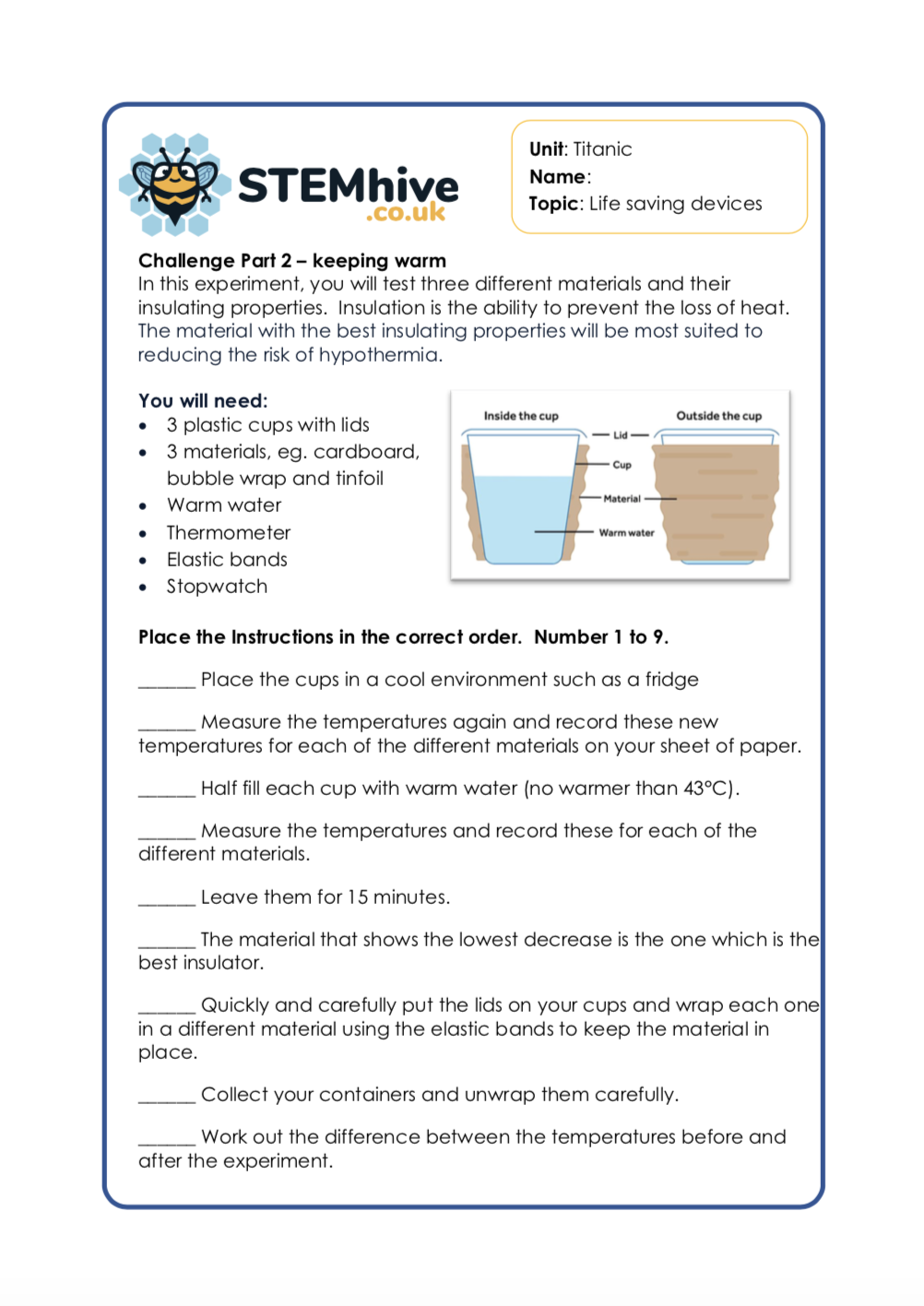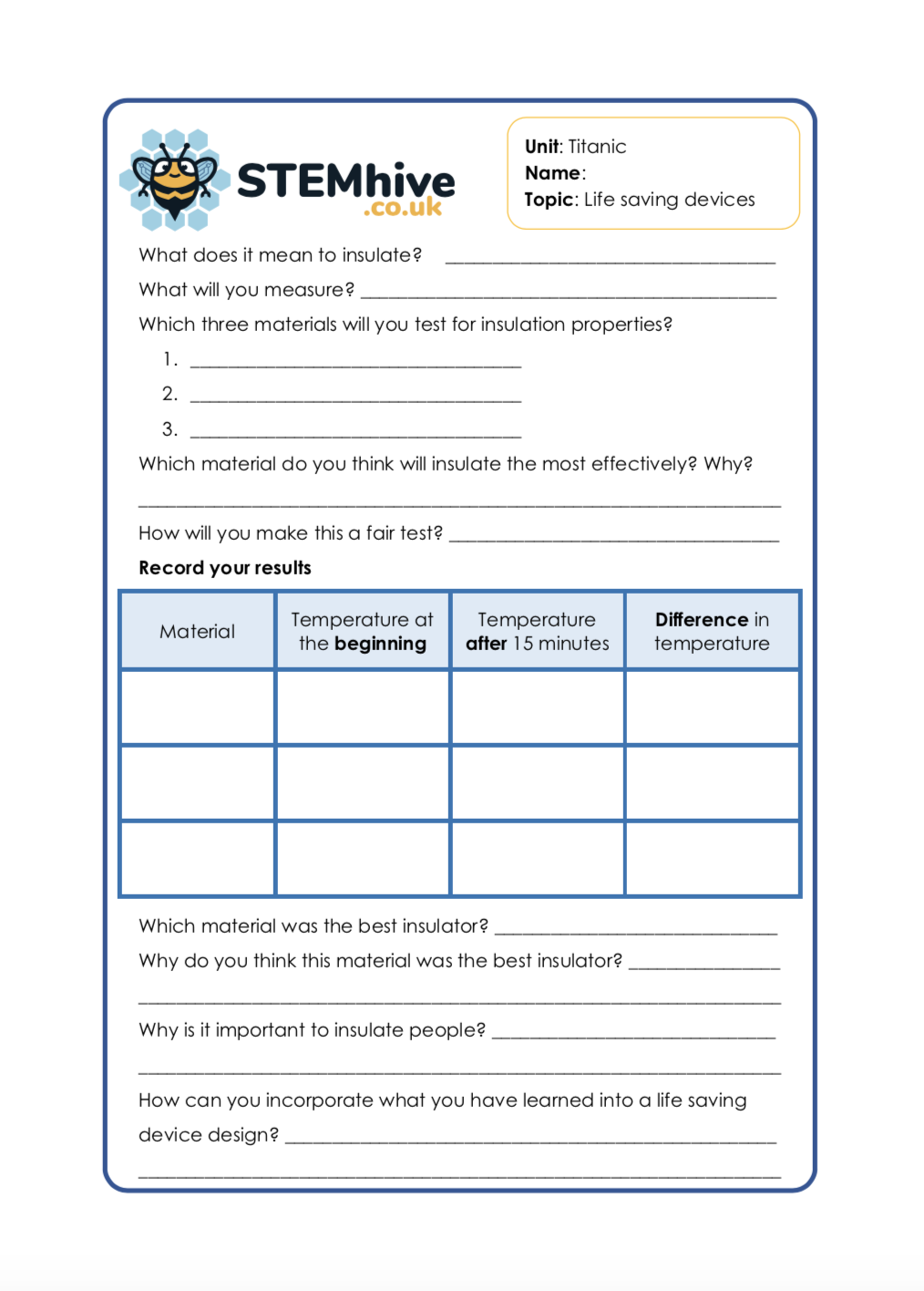Titanic
Main Focus: Investigating Icebergs
This science activity excellently compliments a topic on Titanic for KS2 classes.
So much of an iceberg is under water because water expands as it freezes, meaning the ice is less dense than the surrounding water. Sea water, because it is salty, is more dense than fresh water meaning that the ice floats slightly higher in sea water.
In this experiment your KS2 class will investigate the position of an iceberg in water. They will investigate and measure just how much of the iceberg is underwater, obscured from vision and will help them to understand how the Titanic hit the iceberg and how it did so much damage.
Unlock ResourceMain Focus: Watertight Bulkheads
In this science experiment your Year 5 | Year 6, or P6 and P7 class will investigate the role of watertight bulkheads in maintaining buoyancy in ships. In this resource linked to a topic on Titanic, your class will explore the importance of water displacement so that a damaged ship can still float.
The Titanic was constructed with advanced safety features including “watertight” bulkheads. A bulkhead is a wall within a ship, much like a contained or sealed room. The lower part of the ship was divided by 15 bulkheads into 16 compartments and in the event of a leak, watertight doors could be closed, sealing off the compartment. Engineers planned that the ship could float with two of the compartments flooded and would still be able to survive if the forward four compartments were underwater.
Unlock ResourceMain Focus: Weak Rivets
In this STEM resource for KS2 we are going to explore the science behind the theory that the strength of the rivets on Titanic was compromised.
In this experiment, your class will investigate how a composite material such as slag can create a weaker product. They will test two different kinds of pasta and predict which type of pasta will produce a stronger rod.
For decades, scientists wondered why the Titanic sank so quickly after hitting an iceberg in 1912. Now, some scientists are making the case that it was weak rivets that caused the 46,000 ton Titanic to sink.
Rivets are like smooth screws that ‘glue’ sheets of metal together. Riveting is still used in engineering, but today, riveting large sheets of metal together in shipbuilding has been replaced by the use of bolts and a technique known as welding.
Unlock ResourceMain Focus: Buoyancy
Have you ever wondered how a ship like the Titanic, which was made of heavy steel could float? Or how can a steel ship carry a heavy load of cargo without sinking?
You will already have experimented with floating and sinking and know that if an object is less dense than the fluid, it will float. If the object has the same density as the fluid, it will neither sink nor float. If the object is more dense than the fluid it will sink. This is why when you drip a nail in a bucket of water it will sink to the bottom like a rock.
With a steel-hulled ship, the shape of the ship’s hull is very important.
In this STEM / Science experiment, your class will determine how much weight can be supported by boat hulls of various shapes and volumes and how this relates to the density of water.
Their challenge is to design a boat that can float and hold marbles using only one piece of tin foil. Your KS2 class will make three boats and compare.
Main Focus: Vocabulary and Word Search
In this resource, your class will explore key vocabulary and terminology linked to the Titanic by reading definitions.
Once they have completed the activity sheet linked to vocabulary, they will then find the words in a word search.
Unlock ResourceMain Focus: Communication Methods
In this resource your class will learn how Titanic was able to communicate with other vessels using a range of methods. This sis a great knowledge building activity and leads well into the STEM challenge.
In this STEM task, your class will work in a group to develop alternative methods of communicating for ships at sea. They will test their methods in the classroom, assembly hall or in the playground.
Things to keep in mind:
- Your signals must be clear from a distance of at least 10 metres. Remember that when at sea, the distance would be measured in nautical miles.
- You must be able to communicate your message quickly, for example, medical needs on board, a distress signal, the identity of your ship, a desire to dock, preparing to embark on a voyage
- Can your signal be understood at night, or in heavy fog? You might need more than one signalling method.
Main Focus: Wireless Radio
This is another UKS2 informative science resource that focuses on the wireless radio system that Titanic’s operators had.
The QR code will take your class to a simulation of the Titanic’s SOS call on YouTube and will let them hear what Morse Code sounds like.
To understand what wireless messages sounded like in 1912, your KS2 class will construct a simple wireless transmitter similar to the one used on the Titanic. They will try to develop communication codes and have a go at using Morse code to communicate through audible tones! It is important that they evaluate their experiment, so complete the planning and review sheet afterwards. Working in small teams will help in this experiment.
Main Focus: Titanic Timeline of Events
This is a Titanic timeline of events for your KS2 class. Your class will read all the information about the Titanic and can create a series of questions using the information for a partner.
Your class will then cut out and reorder the events in chronological order.
Unlock ResourceMain Focus: Rusticles
Since the tragic sinking of the Titanic, and initial discovery in 1985, a number of explorers on expeditions have visited the shipwreck. Some have taken images during explorations while others have removed artifacts. By 2002, it was estimated that about 6,000 artifacts had been removed from the Titanic.
As the Titanic hull corrodes, ‘rusticle’ have begun to form.
A rusticle is a formation of rust that looks similar in shape to an icicle or a stalactite, but which occurs deep underground when wrought iron oxidises.
We cannot create rusticles in the classroom, but we can observe the rapid break down of iron. In this experiment, your class will test how iron reacts in different solutions.
Main Focus: Life Saving Devices
Modern day ships must have sufficient lifeboats for the passengers onboard. However, when the Titanic was built, regulations only required a ship of that size to have places for approximately 960 people. Titanic exceeded these requirements by putting to sea with twenty lifeboats which were capable of holding 1,178 passengers and crew, however only 705 people were saved.

